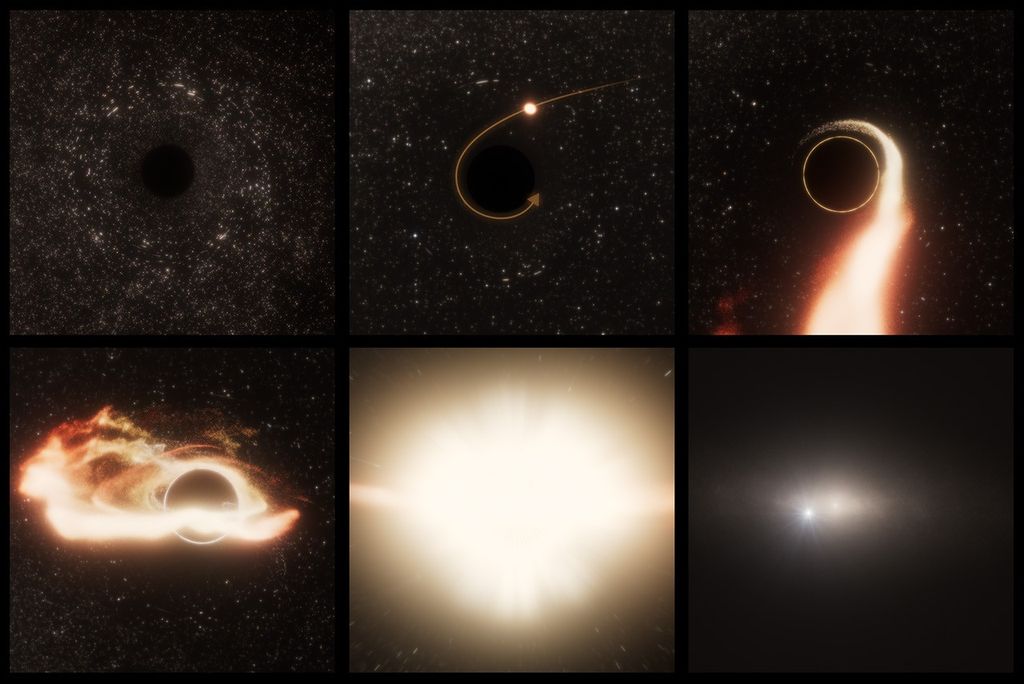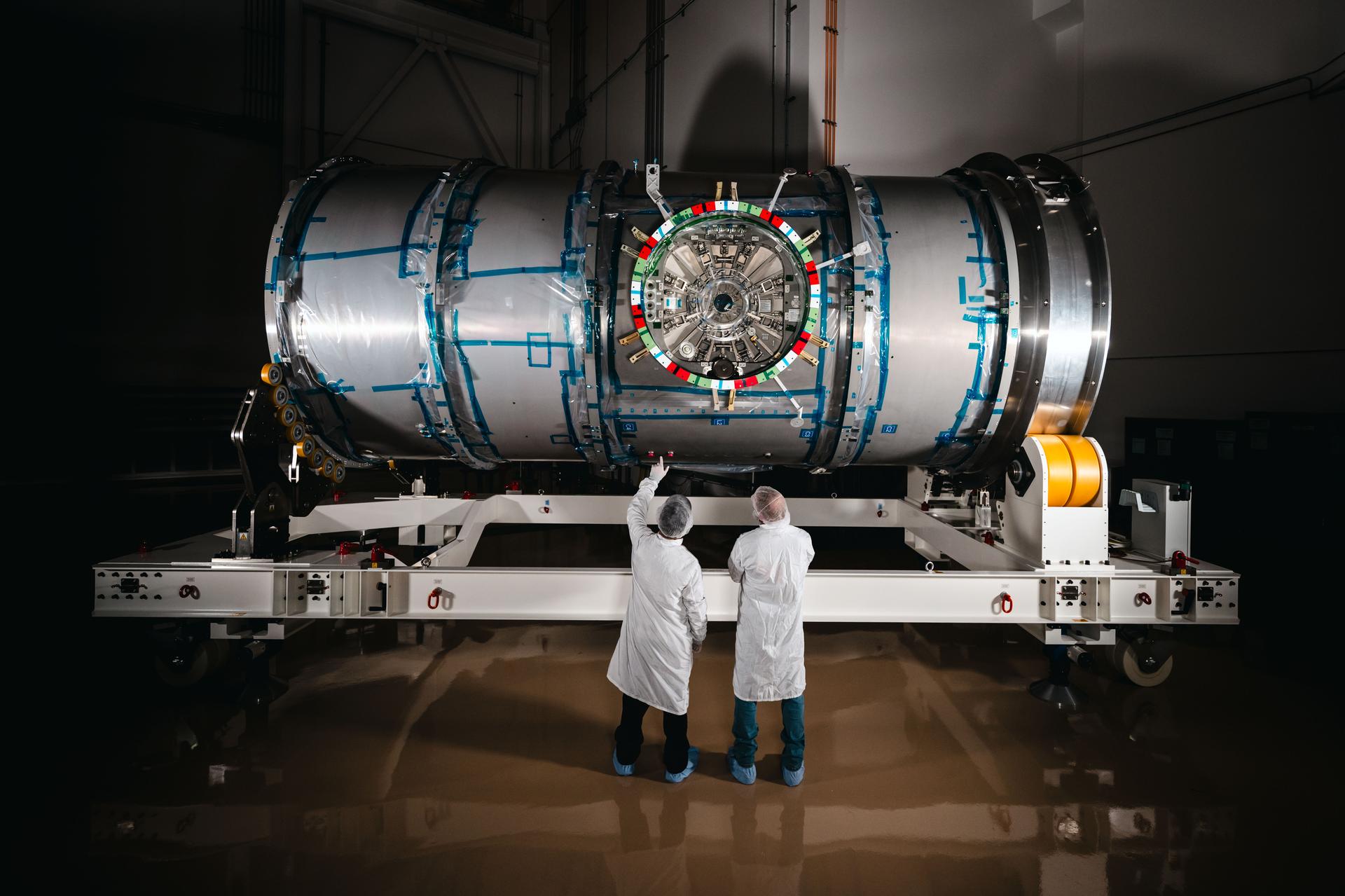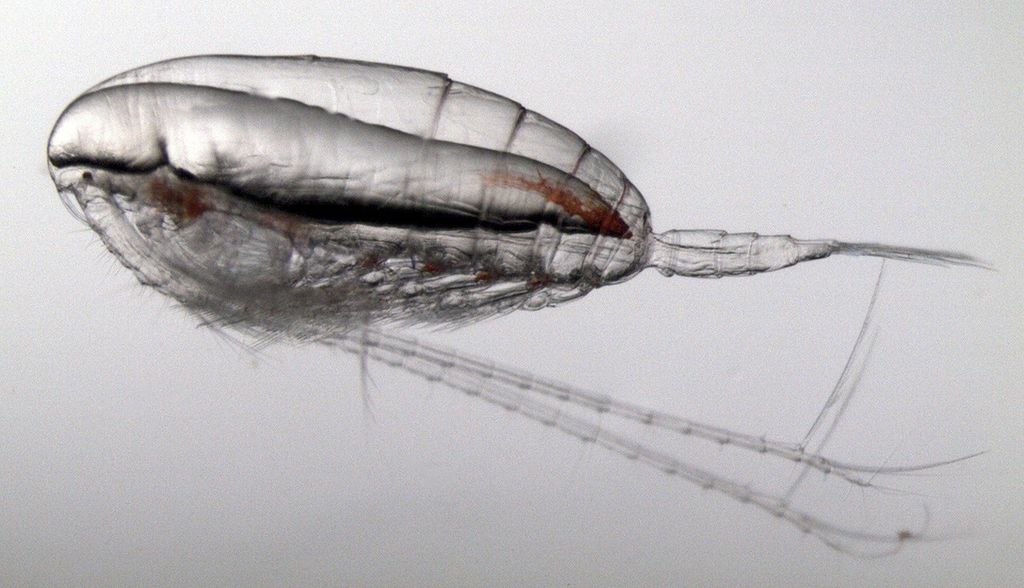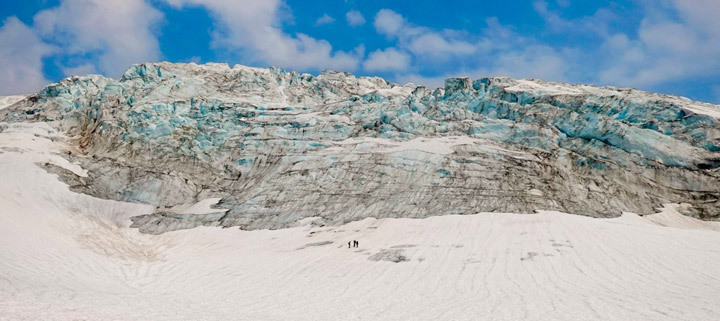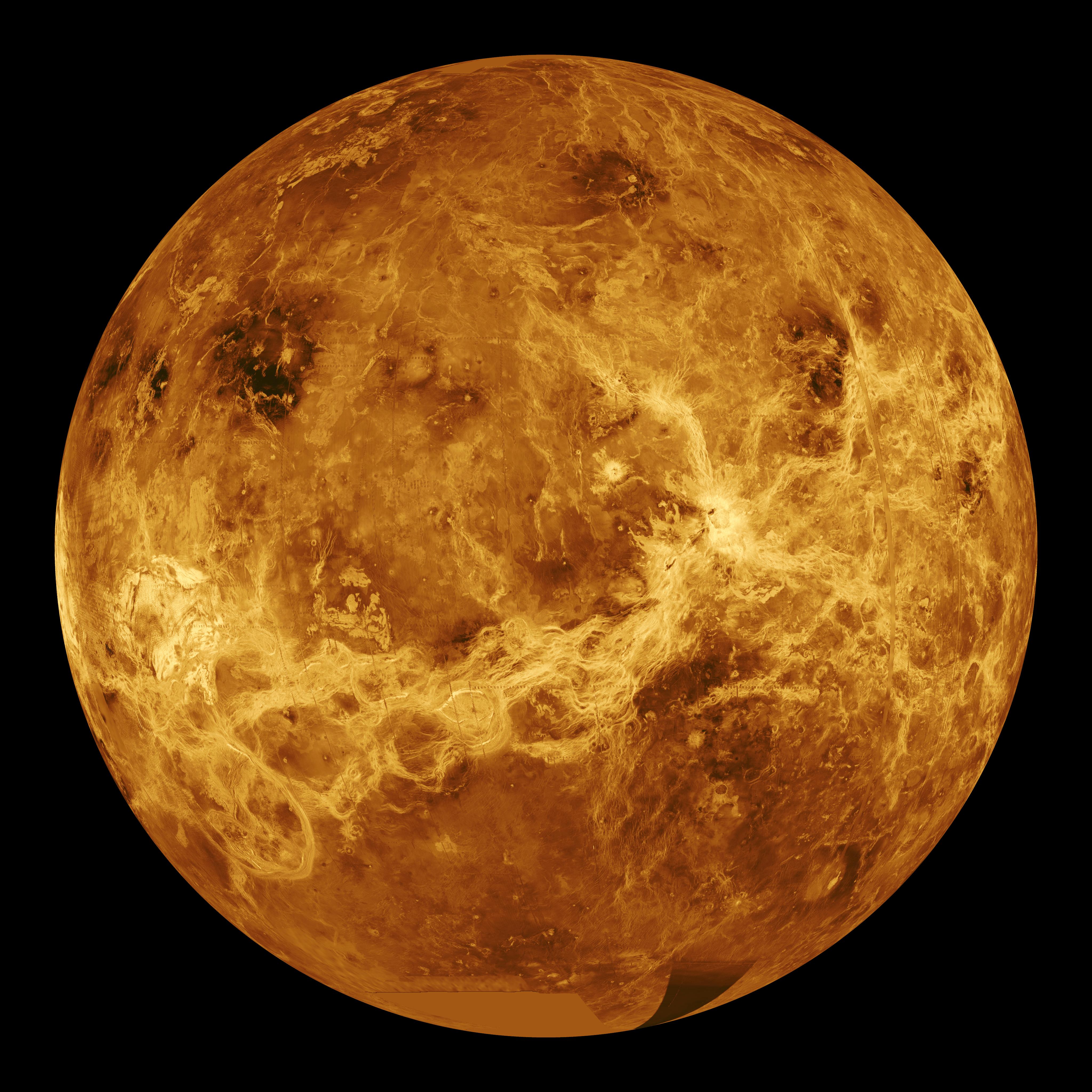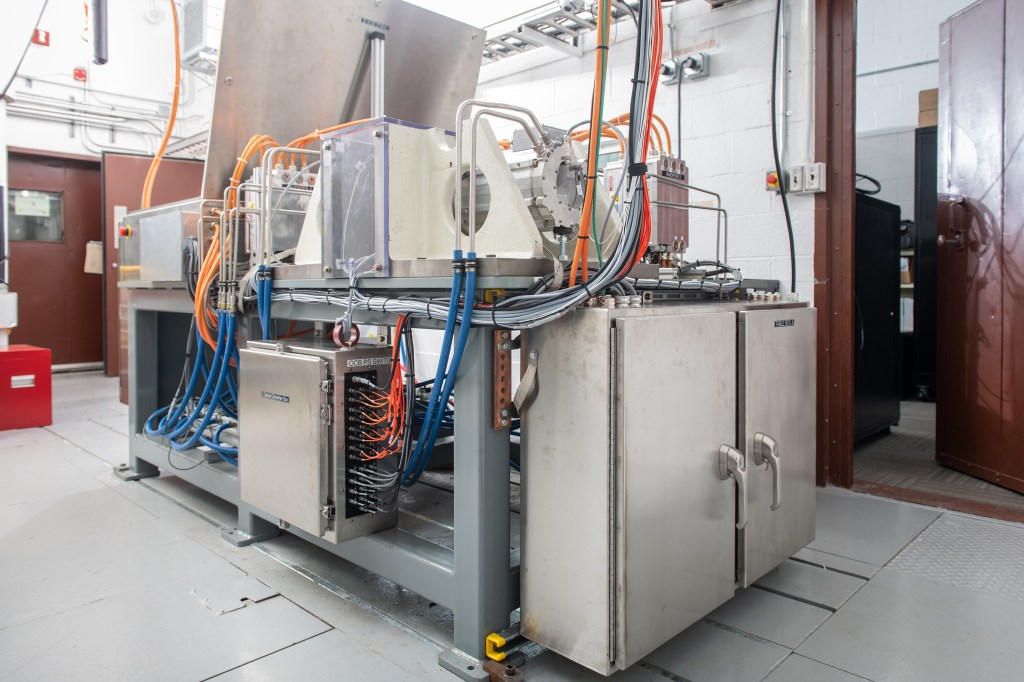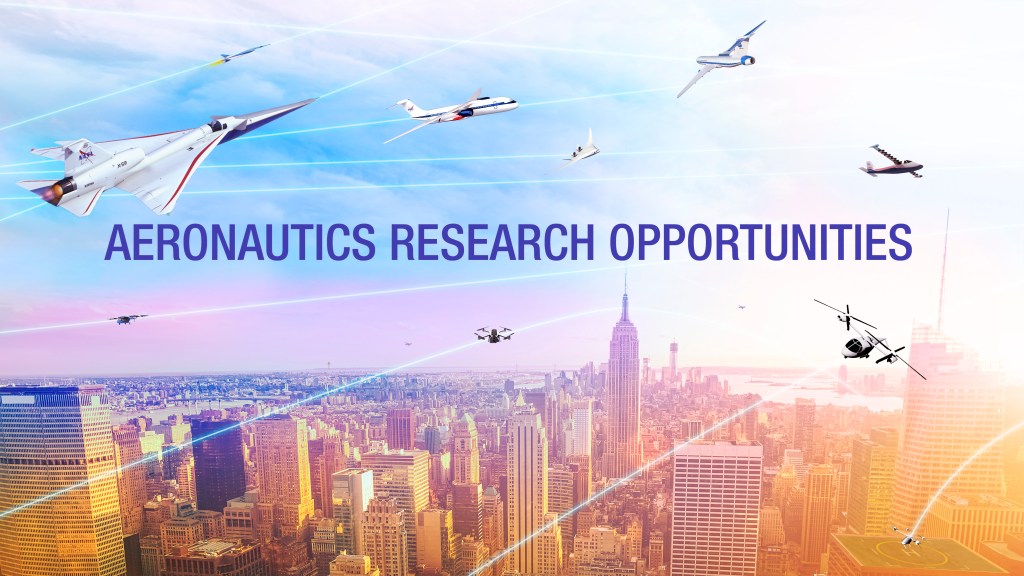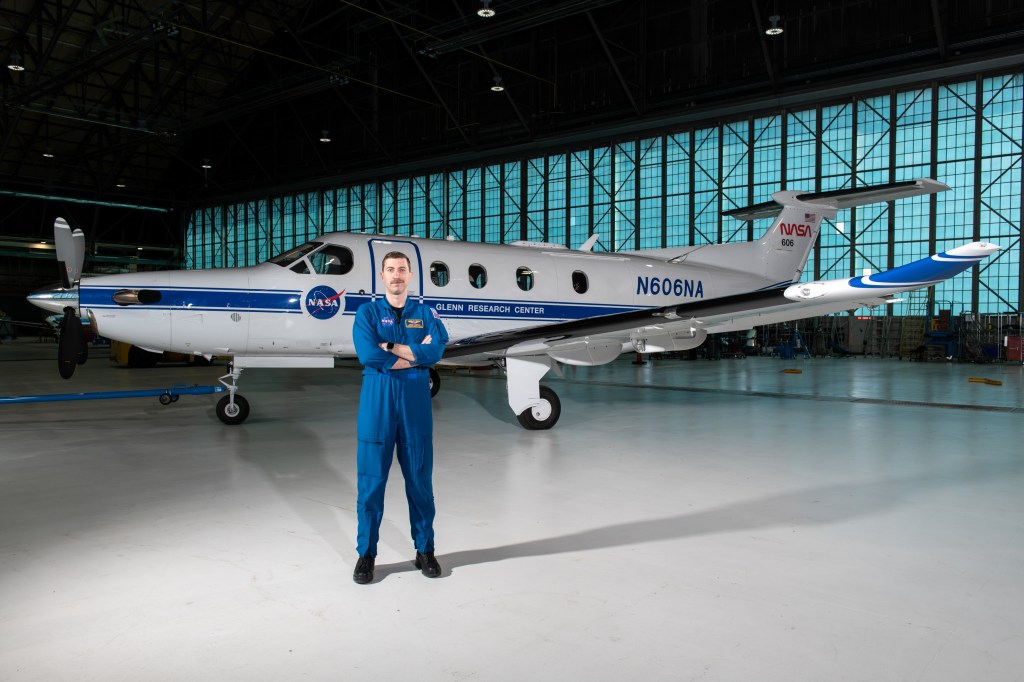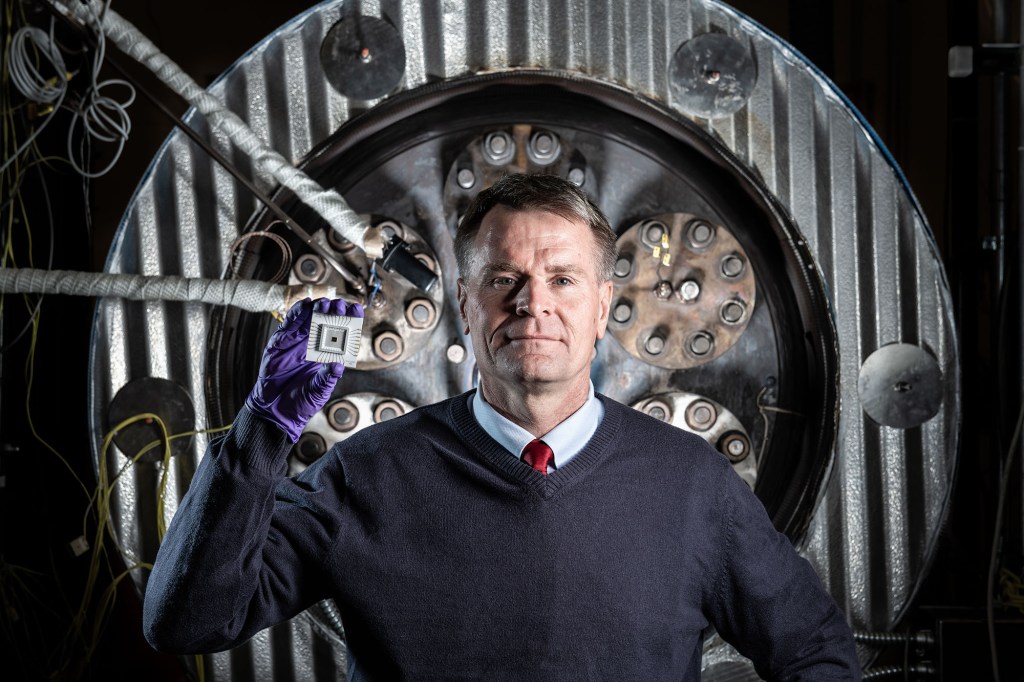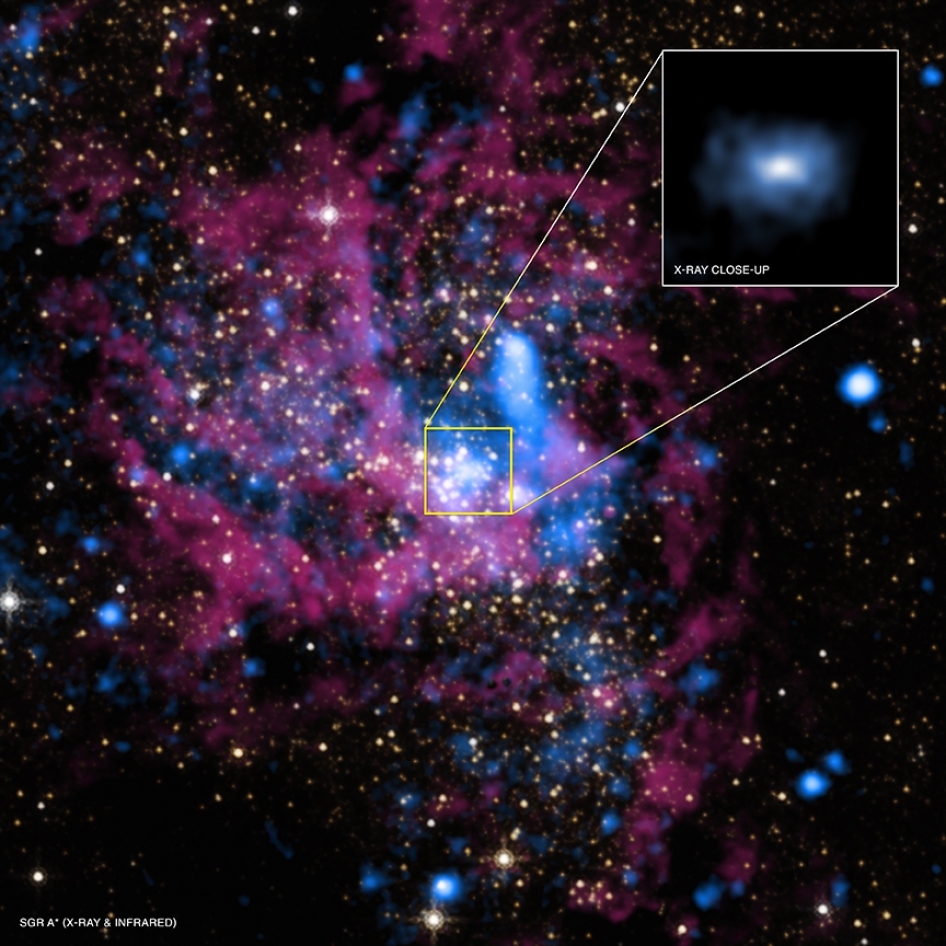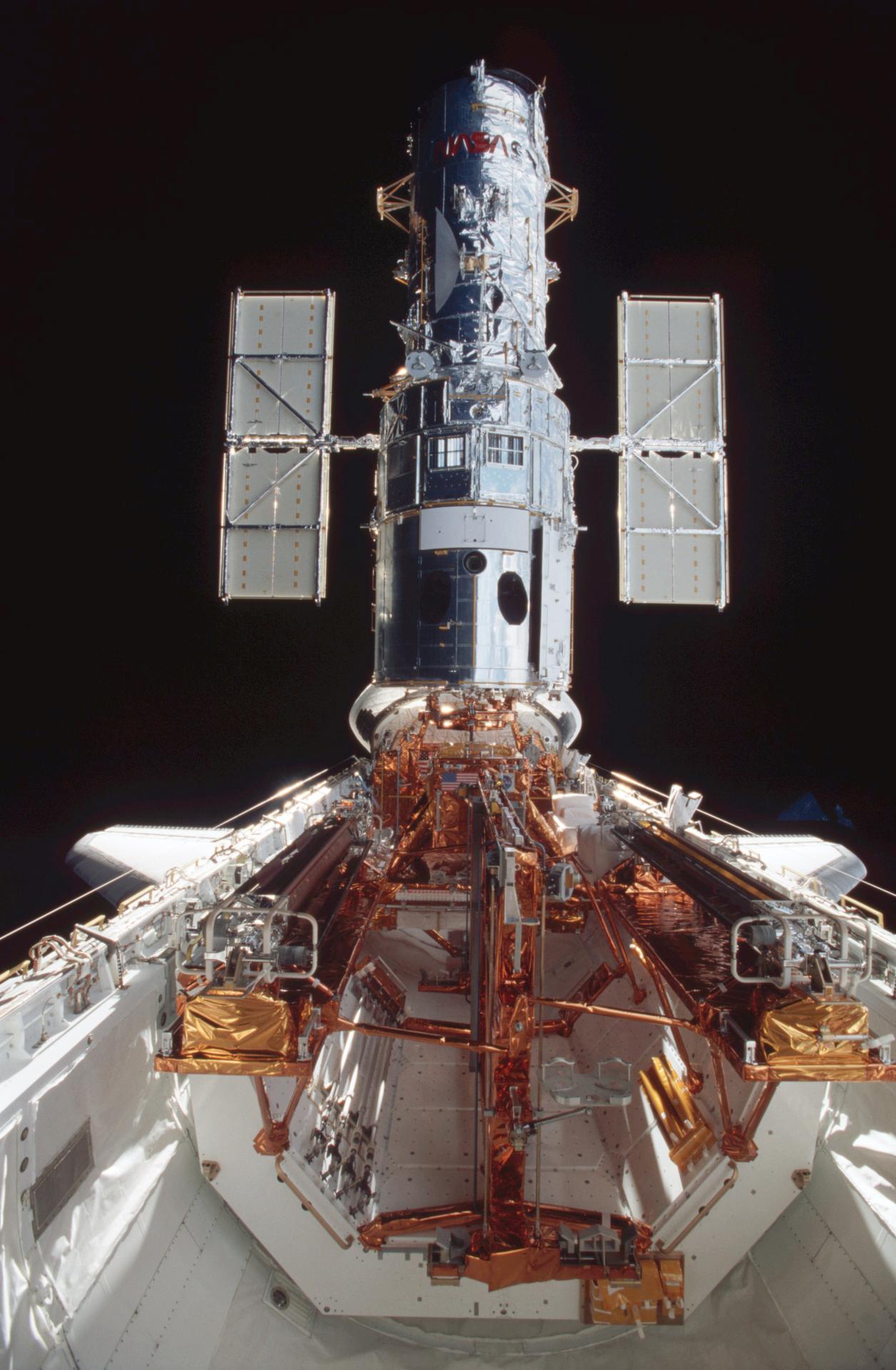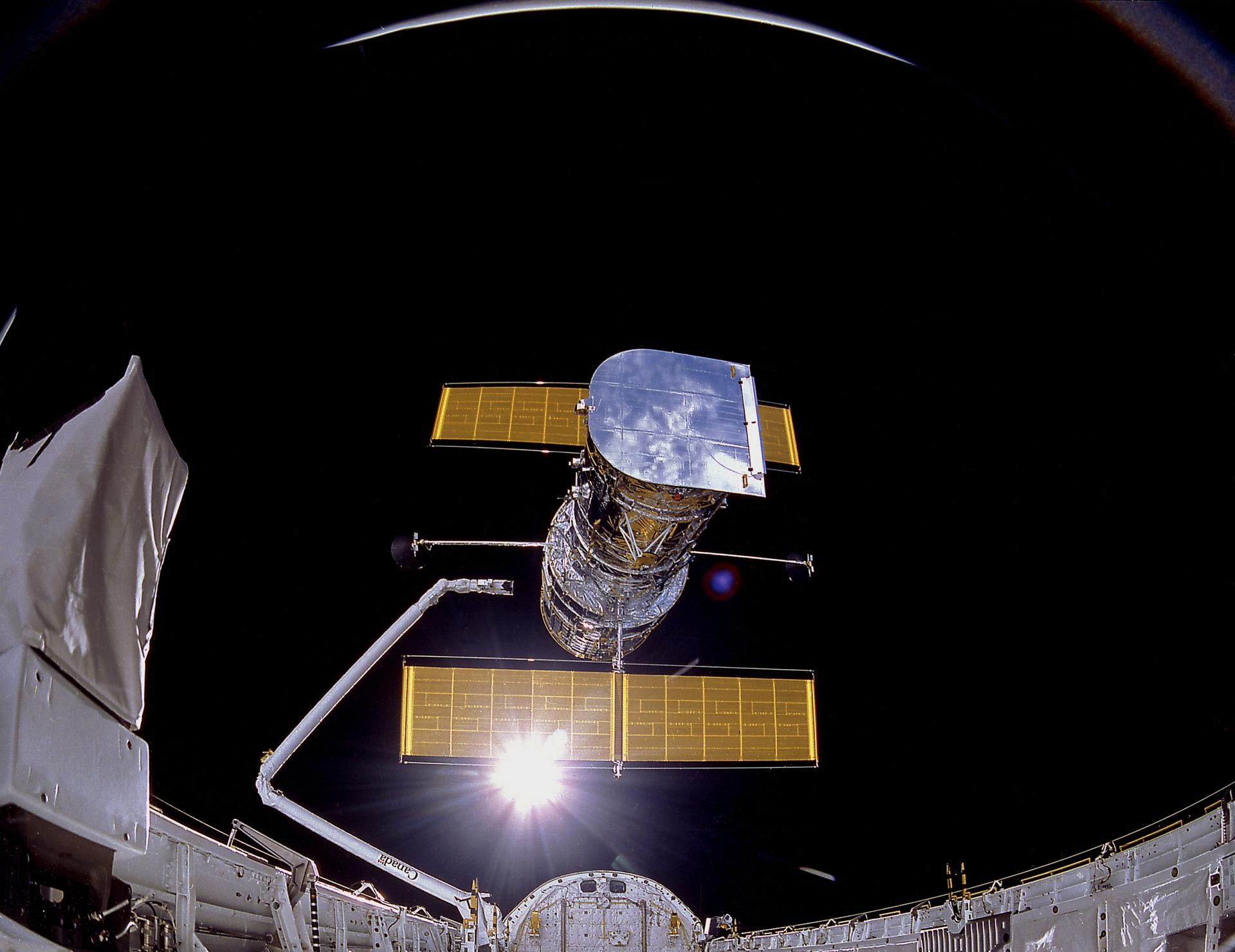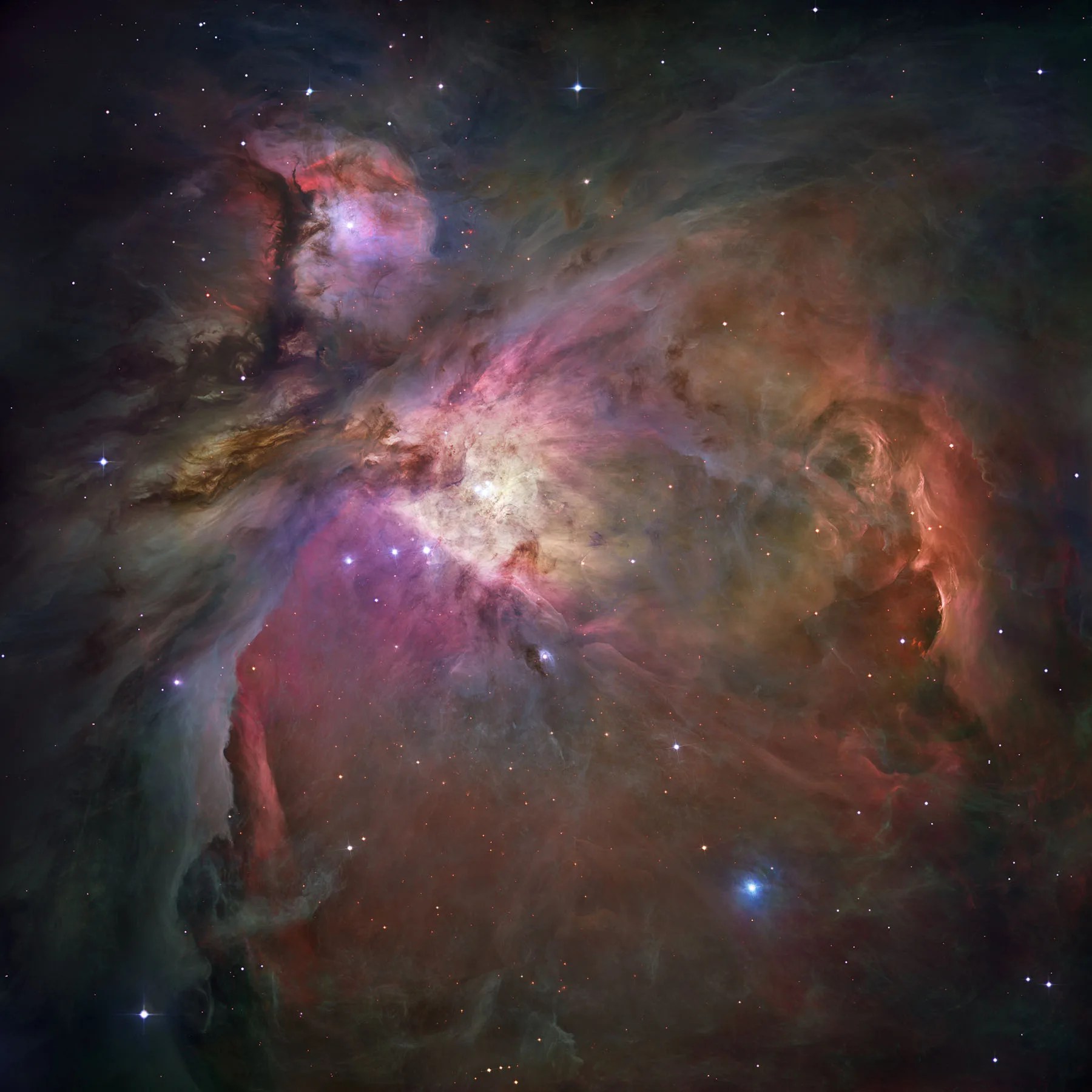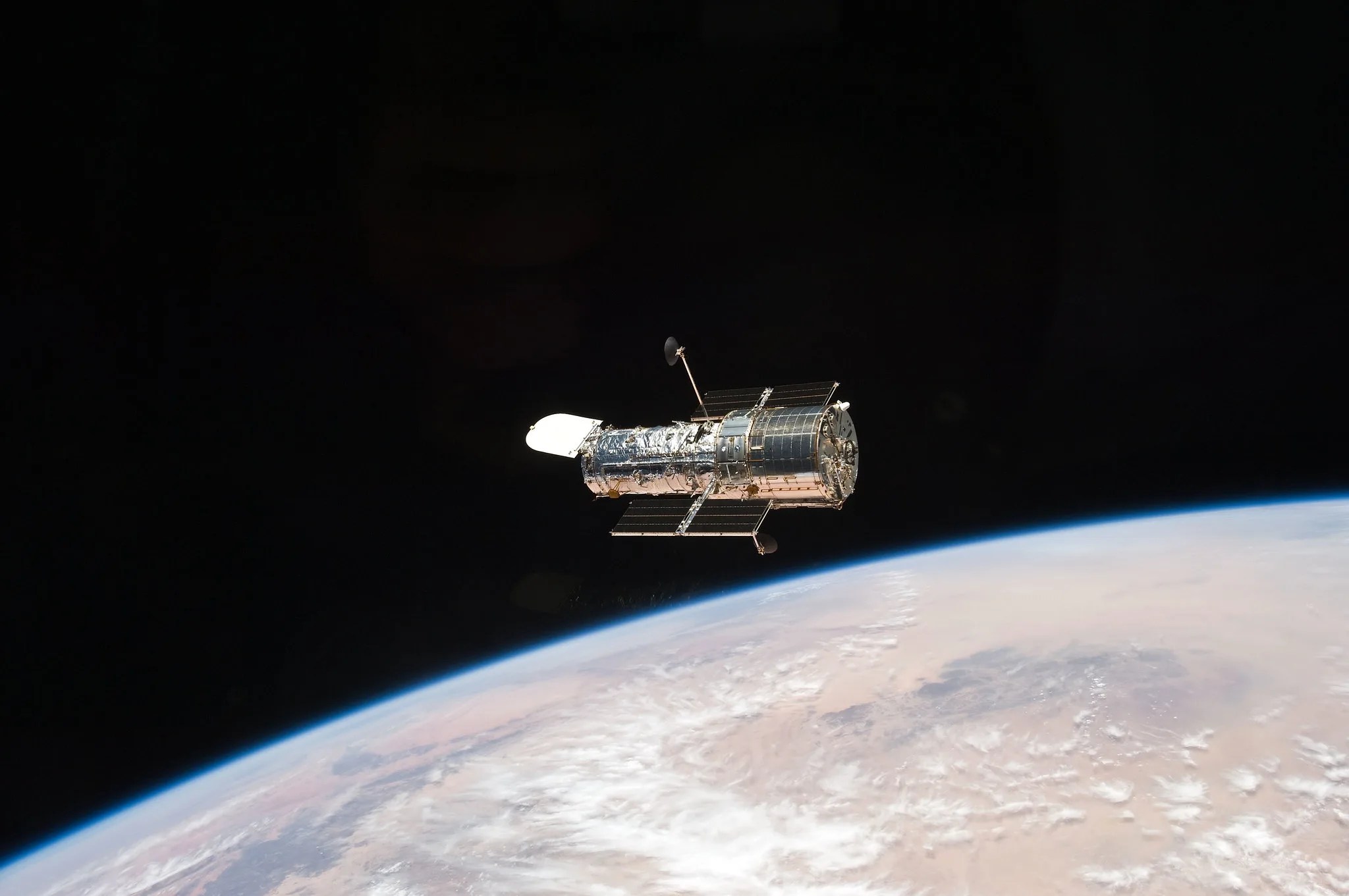27 Key Images in Hubble History
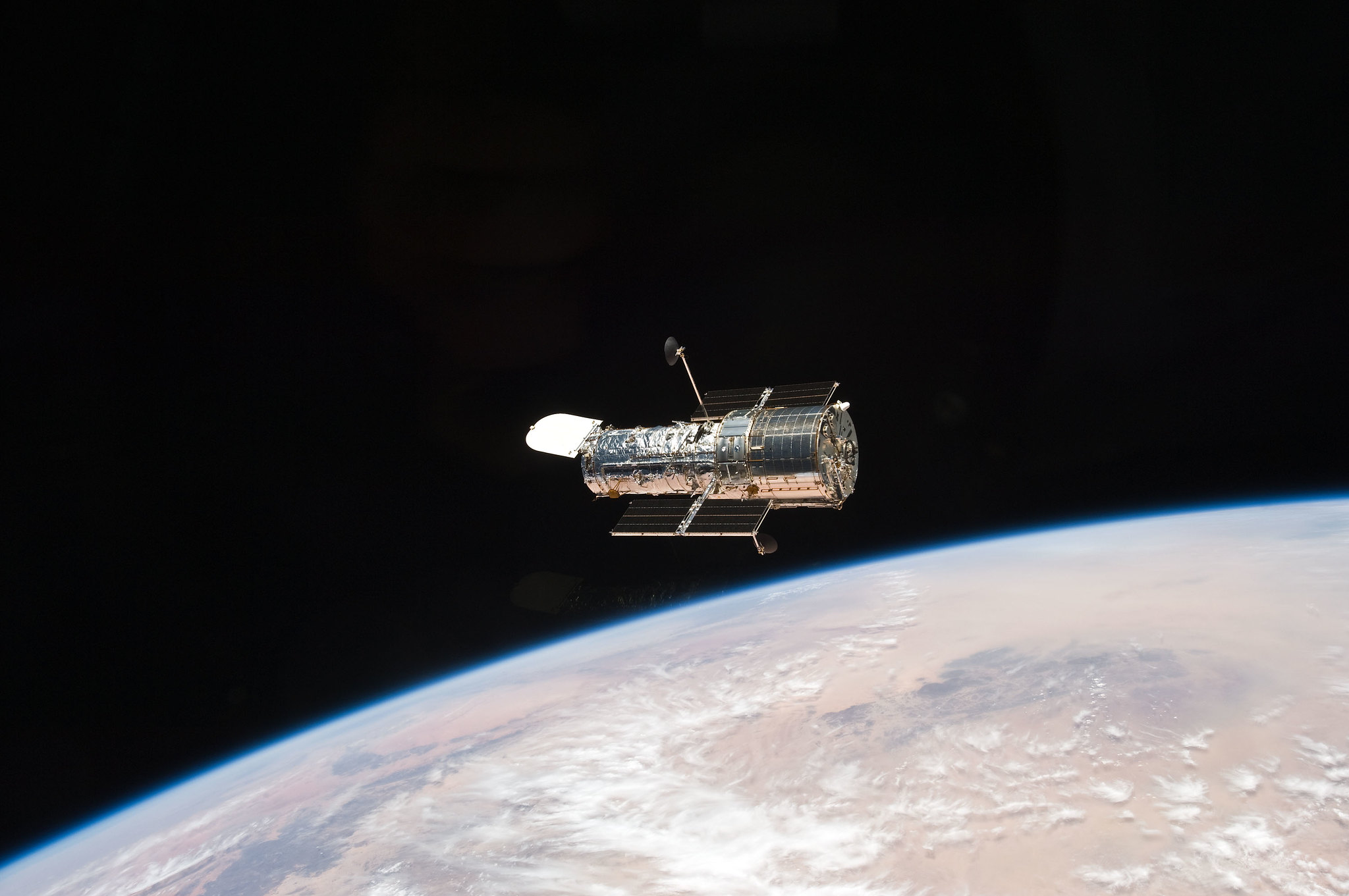
As the Hubble Space Telescope marks 35 years in space, we look back at its journey.
From the astronomers who first envisioned the possibilities for an observatory in space, to the spectacular distant scenes revealed over more than three decades, this collection of images spanning nearly 60 years celebrates Hubble’s rich story.
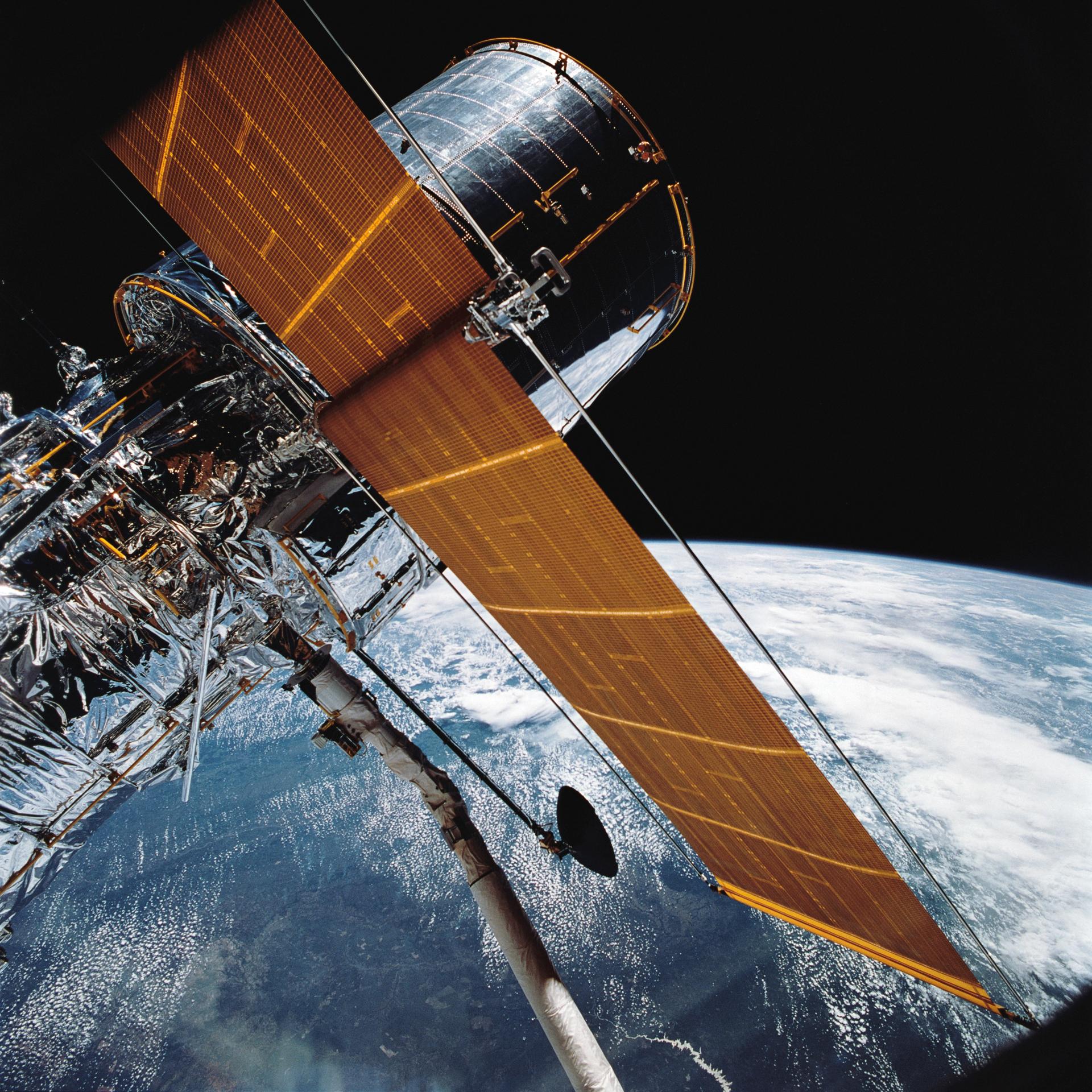
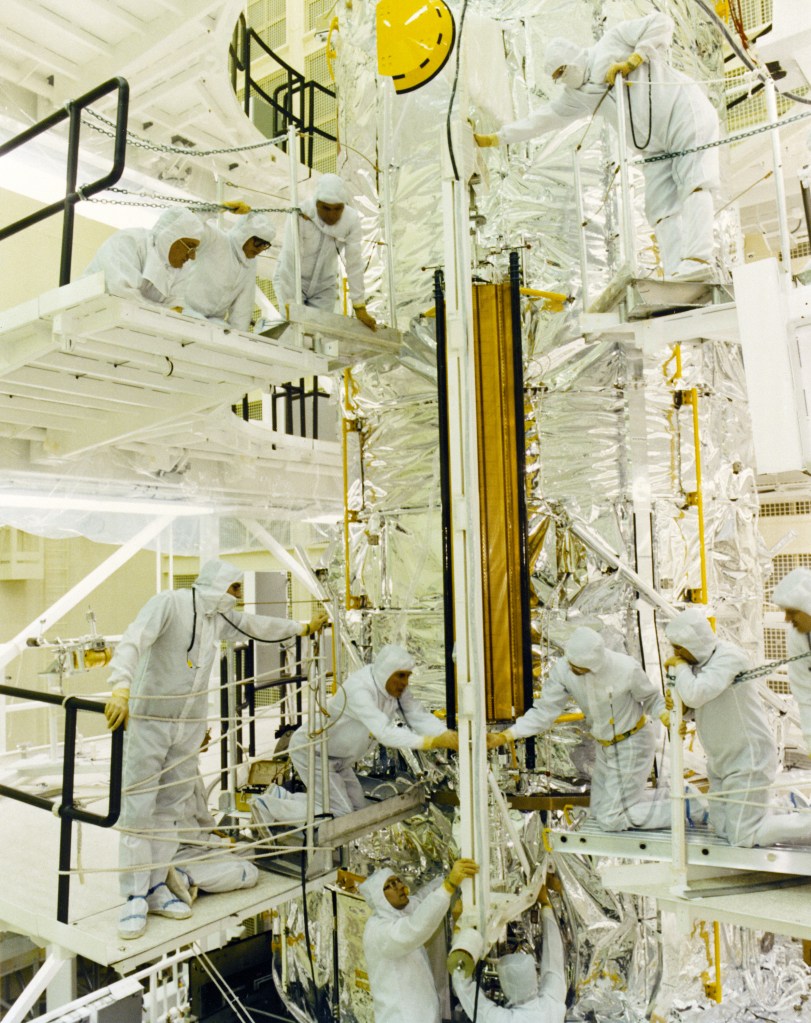
Chapter 1
Developing the Hubble Space Telescope
In 1946, Princeton astrophysicist Lyman Spitzer wrote about the scientific benefits of a telescope in space, but it wasn’t until 1977 that Congress approved funding to build what would become the Hubble Space Telescope. Finally in 1990, it came time for this sophisticated mission to launch.

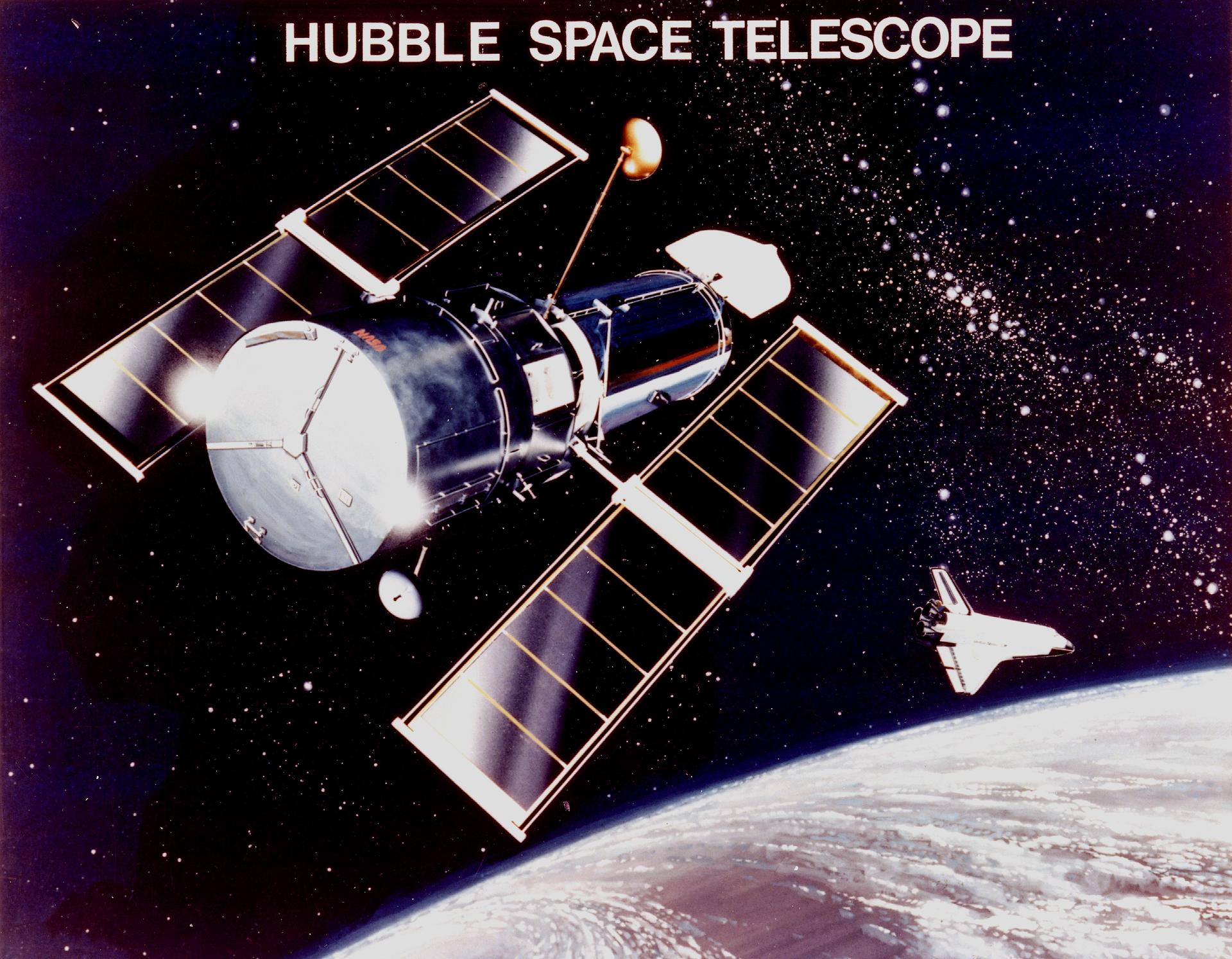
Nancy Grace Roman
Dr. Nancy Grace Roman, NASA’s chief of astronomy, posed in 1966 with a pre-launch model of what would later be named the Hubble Space Telescope. Roman devoted herself to the cause of securing congressional approval and funding for the first large space telescope. Her success would lead to her nickname: the “mother of Hubble.” (Credit: NASA)
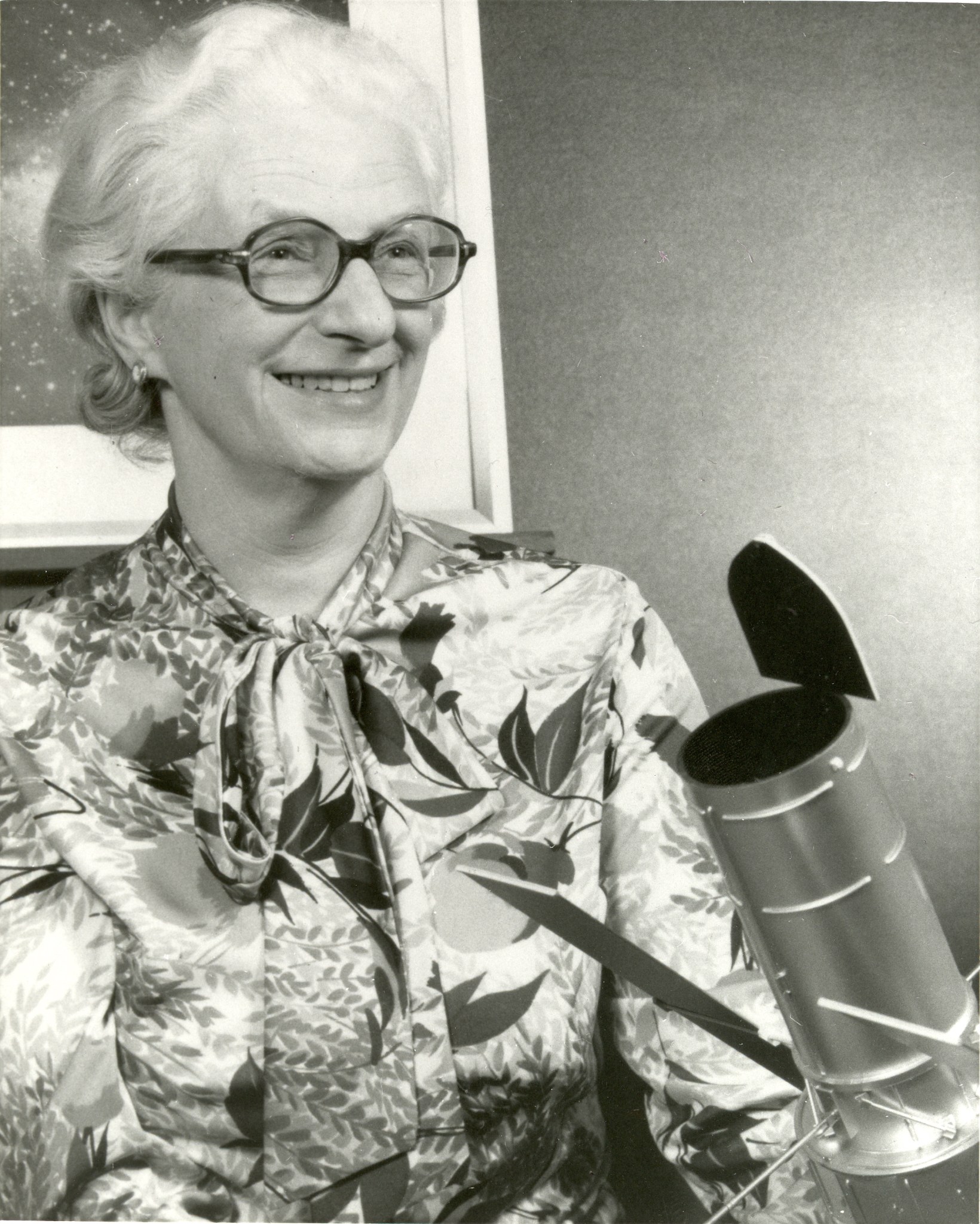
Lyman Spitzer, Jr.
In 1946, American astronomer Dr. Lyman Spitzer explored the benefits and feasibility of launching a large reflecting telescope into orbit around our planet. He wrote that by operating above Earth’s atmosphere, space telescopes would have greater access to wavelengths of light not visible from the ground, in addition to capturing higher quality images. Decades later, Spitzer is seen here in front of the result of that vision, the Hubble Space Telescope, as it sat in a cleanroom prior to launch. (Credit: NASA/Lockheed Martin)

Technicians Inspect Hubble’s Mirror
Prior to installation, technicians inspected the primary mirror of the Hubble Space Telescope. Hubble was launched April 24, 1990, aboard Space Shuttle Discovery’s STS-31 mission. Soon after launch, astronomers realized that the primary mirror had a flaw called spherical aberration, which caused its images to blur. (Credit: NASA)
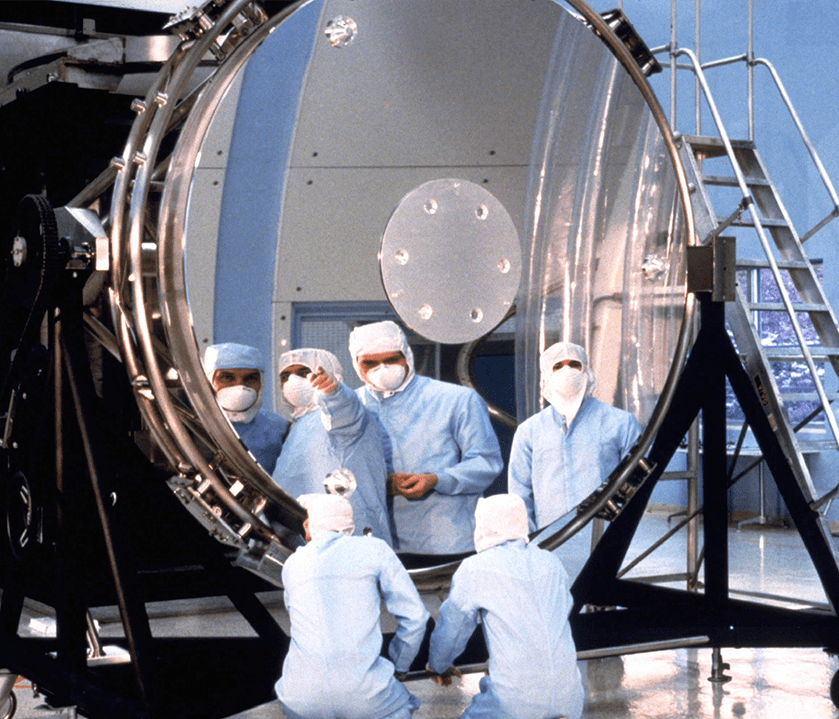
Hubble is Assembled
The Hubble Space Telescope was assembled in a clean room of the Lockheed Missiles and Space Company. NASA’s Marshall Space Flight Center had overall responsibility for design, development, and construction of the observatory. The Perkin-Elmer Corporation in Danbury, Connecticut, developed the optical system and guidance sensors. The Lockheed Missile and Space Company, Sunnyvale, California, produced the protective outer shroud and spacecraft systems, and assembled and tested the finished telescope. (Credit: NASA/Lockheed Martin)

Chapter 2
Launch of a Legend
On April 24, 1990, space shuttle Discovery launched from Kennedy Space Center with the Hubble Space Telescope nestled within its payload bay. A day later, Hubble was released into orbit, ready to begin its mission to explore the vast unknown of space.
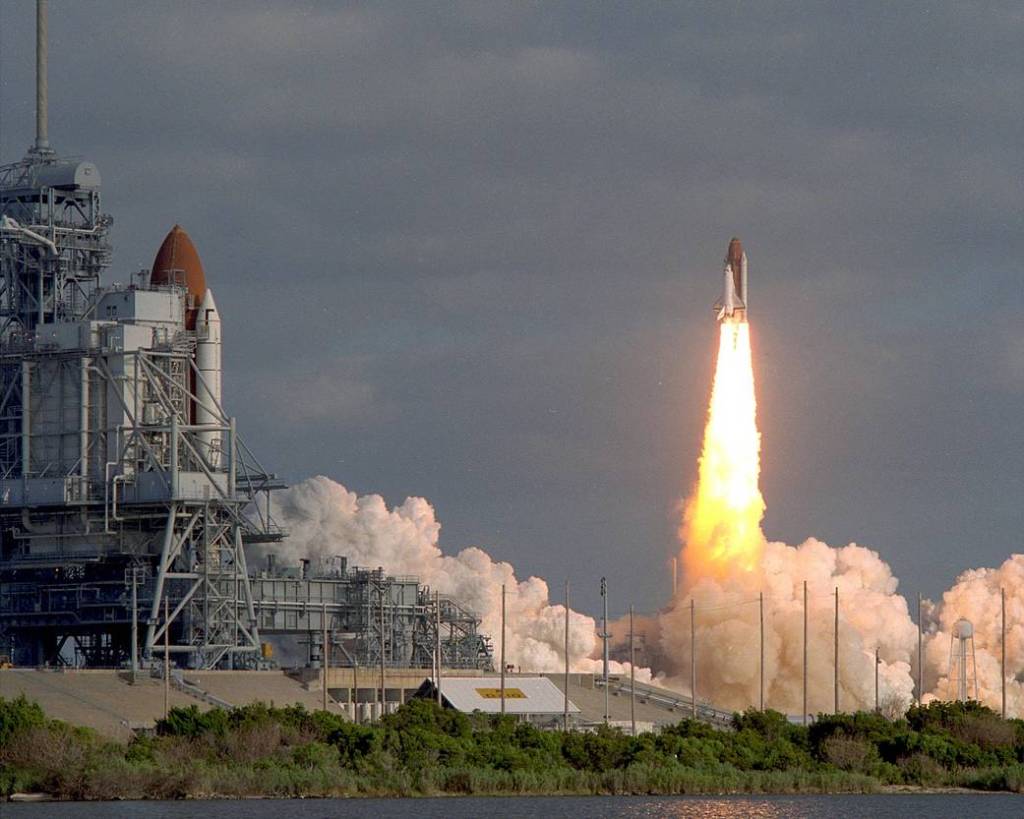
The STS-31 Crew
On Discovery’s middeck, the STS-31 crew poses for an in-flight portrait. Astronaut Loren J. Shriver, mission commander, is at lower left. Astronaut Charles F. Bolden, pilot, floats above. Others, left to right, are Kathryn D. Sullivan, Bruce McCandless II and Steven A. Hawley, all mission specialists. (Credit: NASA)
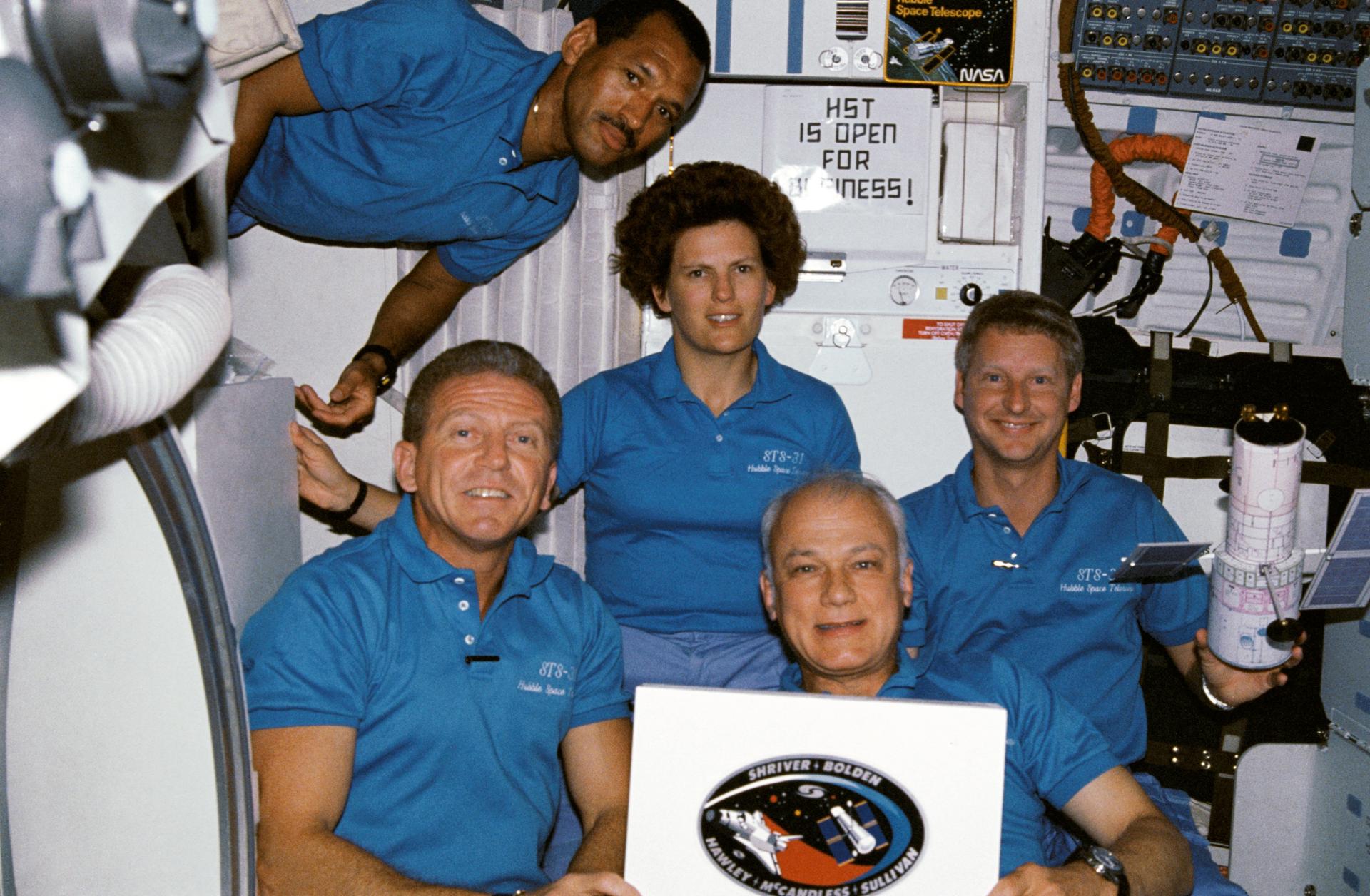
Hubble is Deployed
In this photograph, the Hubble Space Telescope (HST) was being deployed on April 25, 1990. The photograph was taken by the IMAX Cargo Bay Camera (ICBC) mounted in a container on the port side of the Space Shuttle orbiter Discovery (STS-31 mission). (Credit: NASA/Smithsonian Institution/Lockheed Corporation)
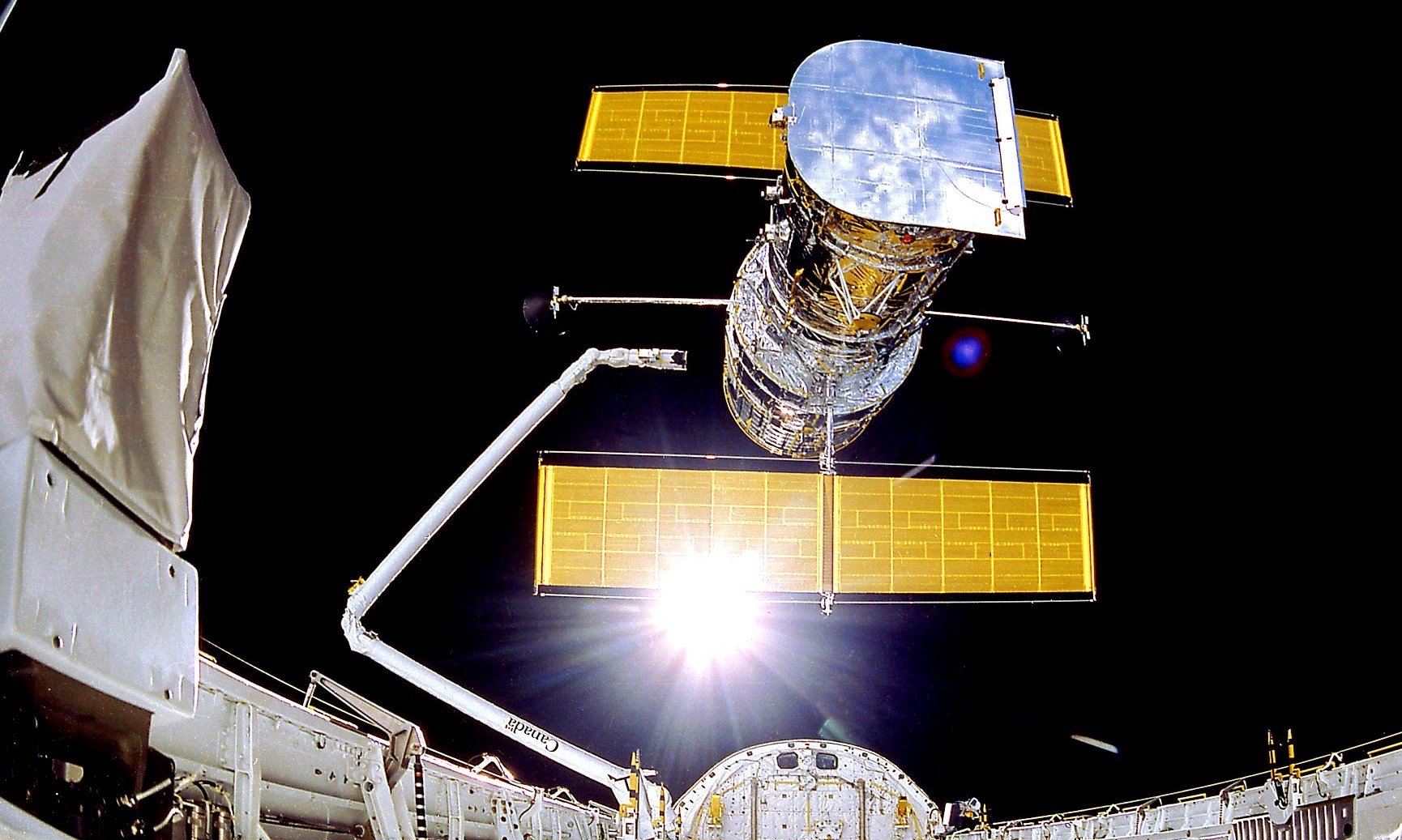
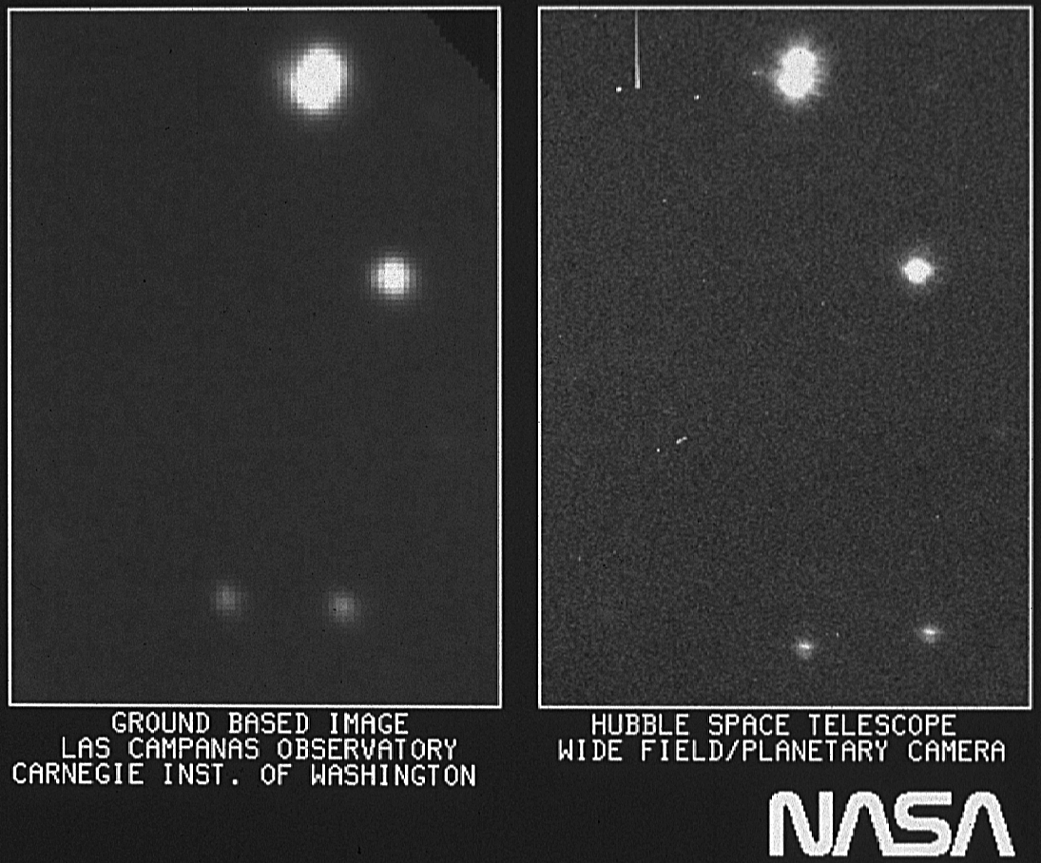
Chapter 3
Hubble Remade
Hubble was built to be serviced by astronauts in space. This allowed for standard maintenance, replacement of failed hardware, and insertion of new technology and instruments.
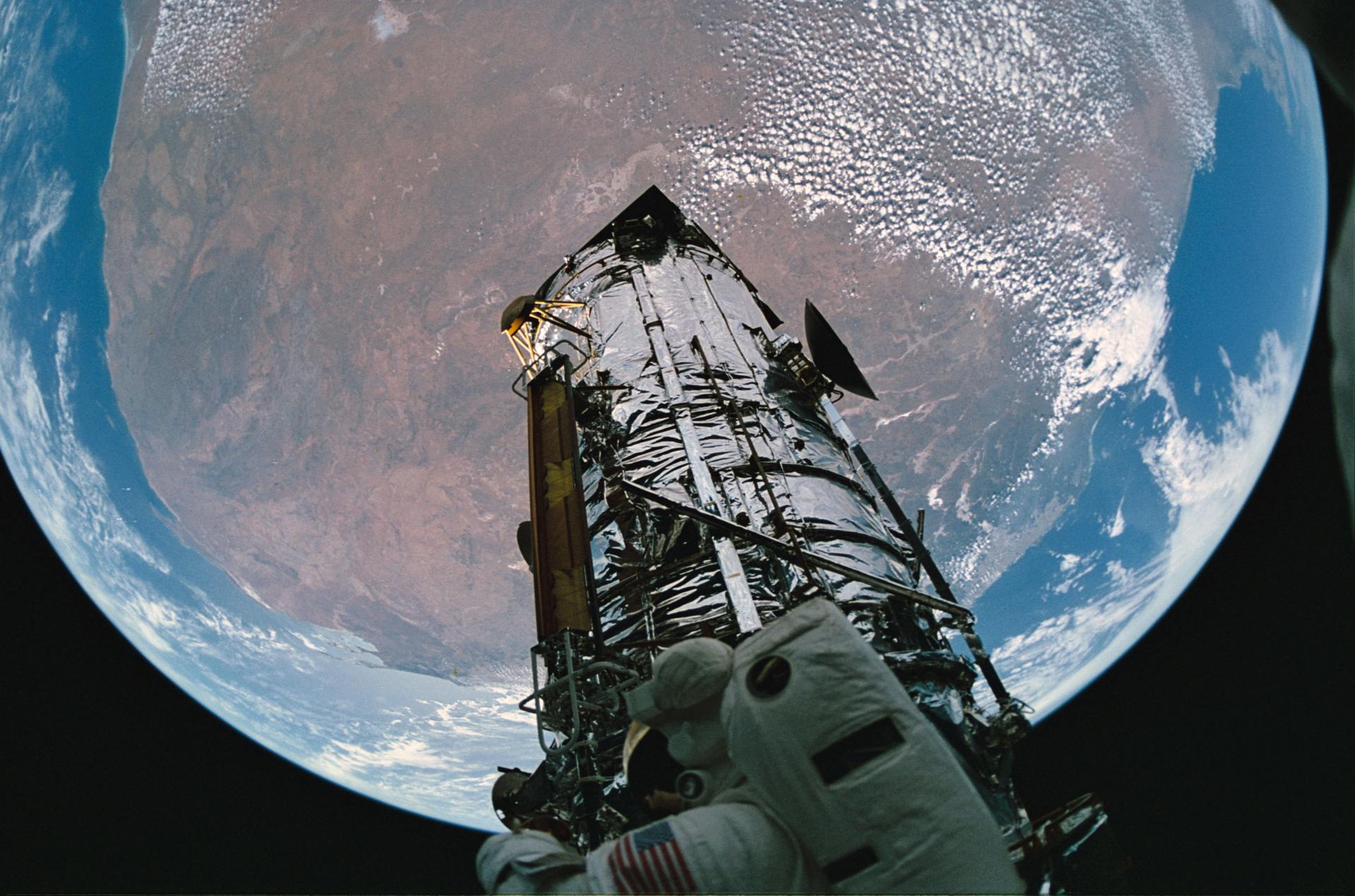
All the components that we might change out, they were designed to be changed with a spacewalk. That’s flexibility, that’s looking for the future, that’s designing for failures.”
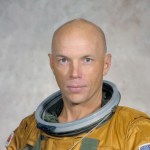
Story Musgrave
NASA Astronaut
The First Servicing Mission
Astronaut F. Story Musgrave, seen anchored on the end of the Remote Manipulator System arm, prepares to be elevated to the top of the towering Hubble Space Telescope to install protective covers on magnetometers. Astronaut Jeffrey A. Hoffman (bottom of frame) assisted Musgrave with final servicing tasks on the telescope, wrapping up five days of extravehicular activities. This servicing mission was critical to Hubble’s future as it installed hardware that compensated for a flawed mirror resulting in clear images for the first time. (Credit: NASA)
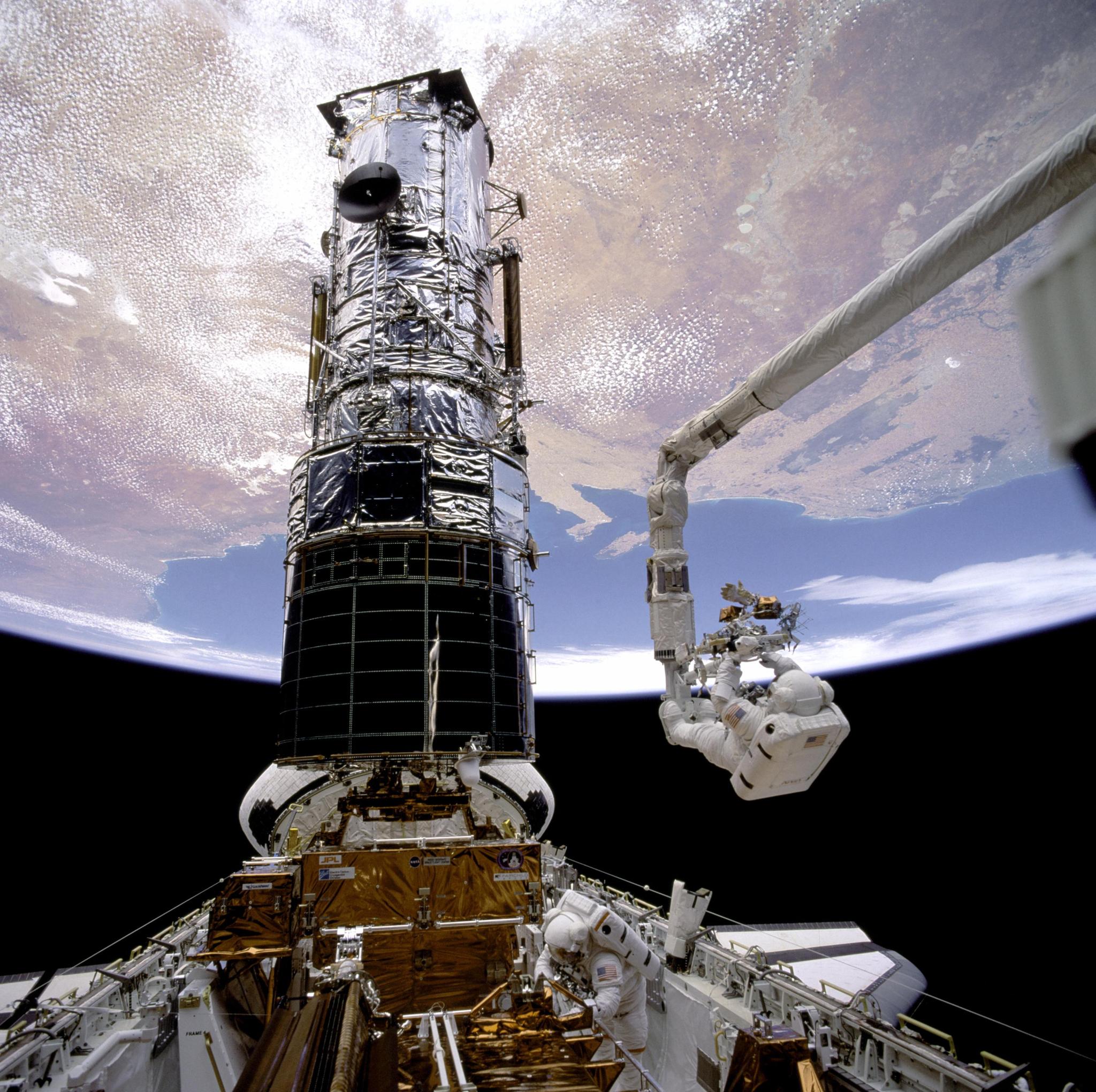
“The Trouble with Hubble Is Over”
Following the successful first servicing mission to Hubble, Maryland Senator and mission advocate Barbara Mikulski officially declared that “the trouble with Hubble is over” at a NASA press conference on January 13, 1994. The images in her hands show the galaxy M100 before and after Hubble’s mirror fix. (Credit: NASA)
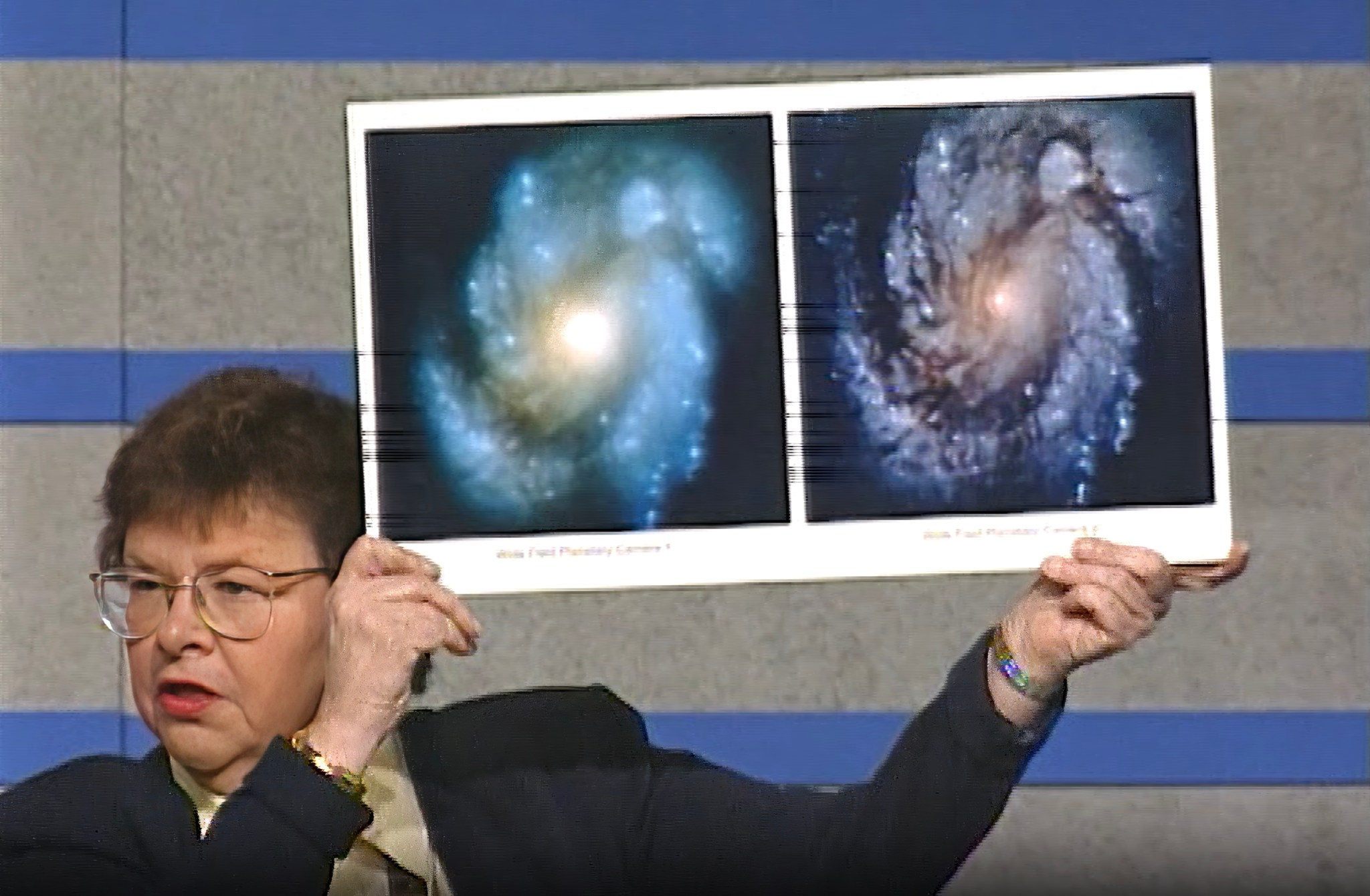
Servicing Mission-4 is Reinstated
Following the Space Shuttle Columbia disaster, NASA administrator Sean O’Keefe canceled Hubble’s final servicing mission due to safety risks. After mitigating those risks, new NASA Administrator Mike Griffith (left) announced the reinstatement of the mission to the Hubble team at Goddard Space Flight Center, home to Hubble mission operations. The audience, including Senator Barbara Mikulski (front row), gave a standing ovation. (Credit: NASA)

The Final Hubble Servicing Mission
Astronaut Mike Massimino, STS-125 mission specialist, participated in the mission’s fourth spacewalk as work continued to refurbish and upgrade the Hubble Space Telescope. During the eight-hour spacewalk, Massimino and astronaut Michael Good (out of frame) continued repairs and improvements to the Space Telescope Imaging Spectrograph, which has helped extend Hubble’s life. (Credit: NASA)
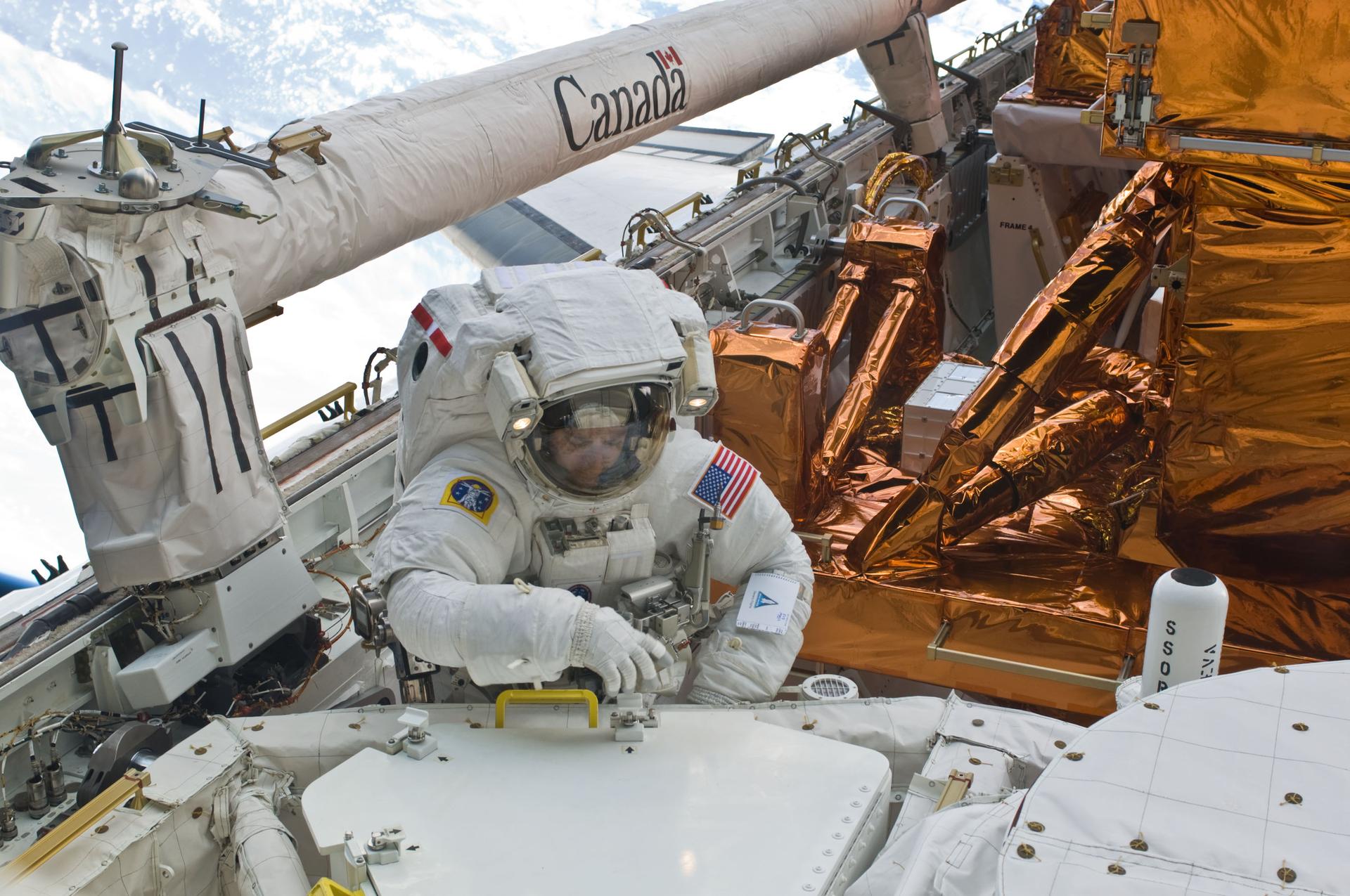
Hubble Released
The Space Shuttle Atlantis’ Remote Manipulator System robotic arm lifted Hubble from the cargo bay for its final release. With the installation of two new instruments and the repair of two others, this final servicing mission left the telescope at the peak of its scientific capability. (Credit: NASA)
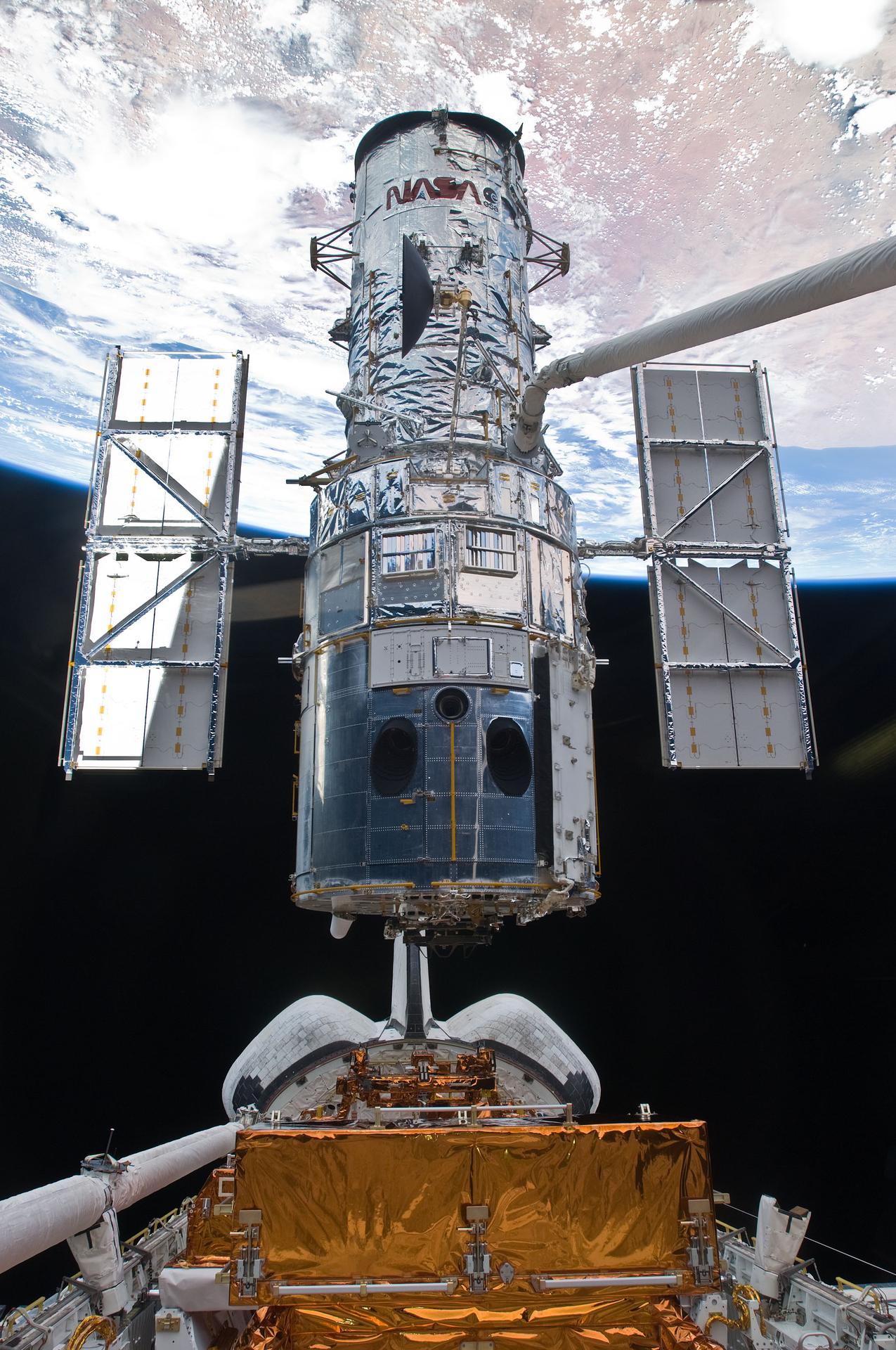
Chapter 4
The Universe Unveiled
Hubble’s lasting legacy shines through the telescope’s spectacular images of space. These views fundamentally shape the way we think about space, and capture the minds and hearts of people all over the world.

Comet Shoemaker-Levy 9 Impacts Jupiter
In July 1994, Hubble imaged fragments of Comet Shoemaker-Levy 9 crashing into Jupiter’s atmosphere. Each fragment left a temporary dark scar that revealed deeper layers of the planet’s atmosphere. It was the first time astronomers witnessed such an event, and Hubble — only four years into its mission — was put to work to collect data as 21 fragments bombarded the gas giant. (Credit: R. Evans, J. Trauger, H. Hammel, and the HST Comet Science Team and NASA)
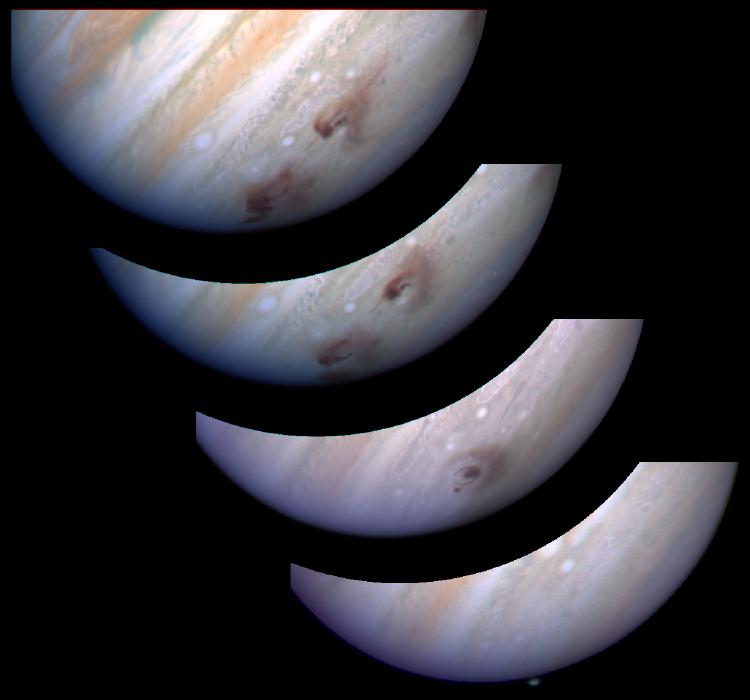
The Hourglass Nebula
The sands of time are running out for the central star of this the Hourglass Nebula. With its nuclear fuel exhausted, this brief, spectacular, closing phase of a sun-like star’s life occurs as its outer layers are ejected and its core becomes a cooling, fading white dwarf. In 1995, astronomers used the Hubble Space Telescope to make a series of images of planetary nebulae, including the one above. Here, delicate rings of colorful glowing gas (nitrogen-red, hydrogen-green, and oxygen-blue) outline the tenuous walls of the ‘hourglass.’ The unprecedented sharpness of Hubble’s images revealed surprising details of the nebula ejection process and may resolve the outstanding mystery of the variety of complex shapes and symmetries of planetary nebulae. (Credit: NASA, WFPC2, HST, R. Sahai and J. Trauger [JPL])
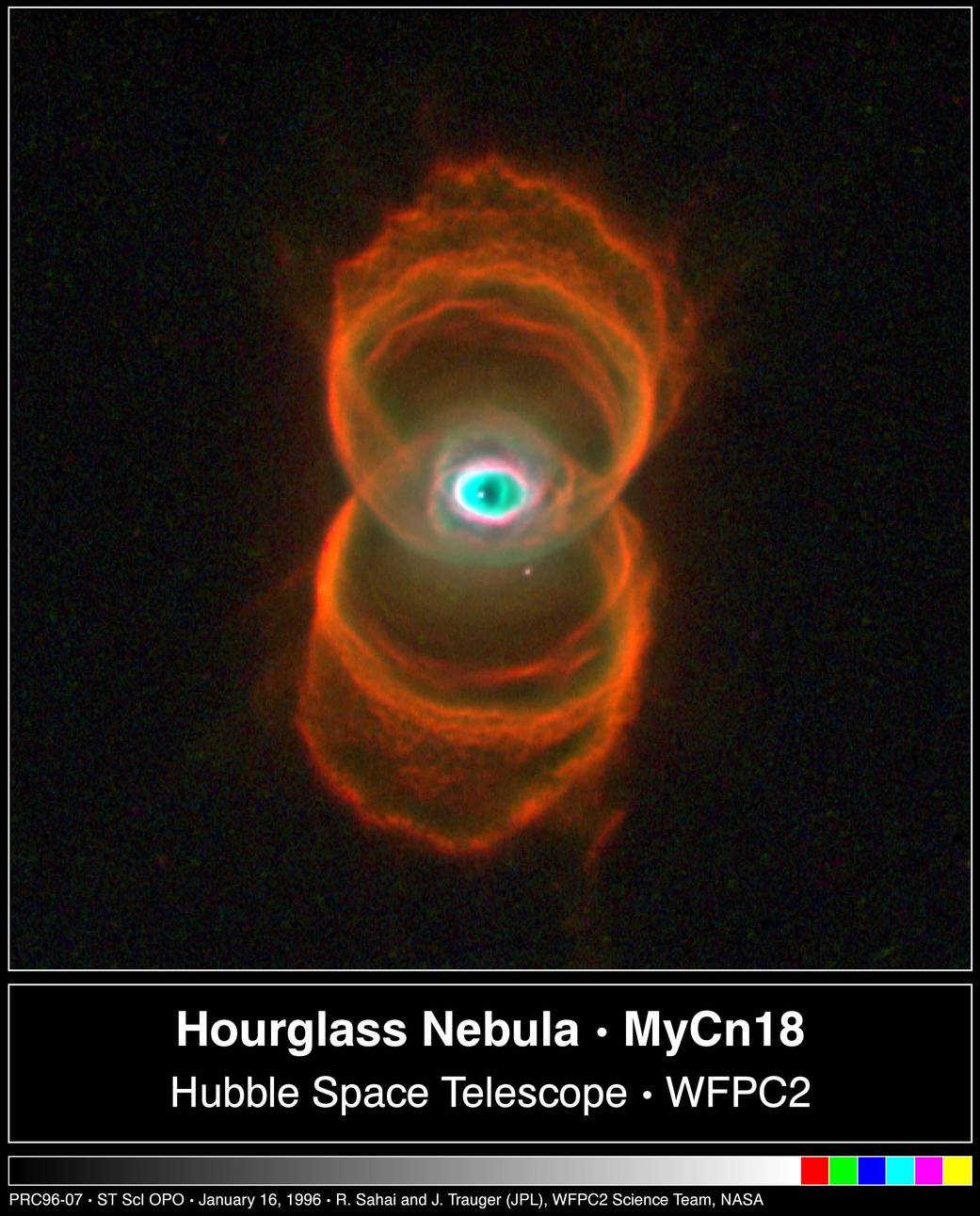
The First Hubble Deep Field
In 1995, the Hubble Space Telescope spent 10 straight days in a unique experiment, staring at a dark, seemingly empty patch of sky―about the size of a pinhead held at arm’s length―near the Big Dipper. The goal was to see what, if anything, could be found there.
The result was astounding: a collection of thousands of galaxies in various stages of evolution, a glimpse back in space and time that revealed a universe full of previously unrevealed wonders. The light from some of the farthest galaxies in the image traveled for 12 billion years to reach Earth. (Credit: R. Williams [STScI], the Hubble Deep Field Team, and NASA/ESA)
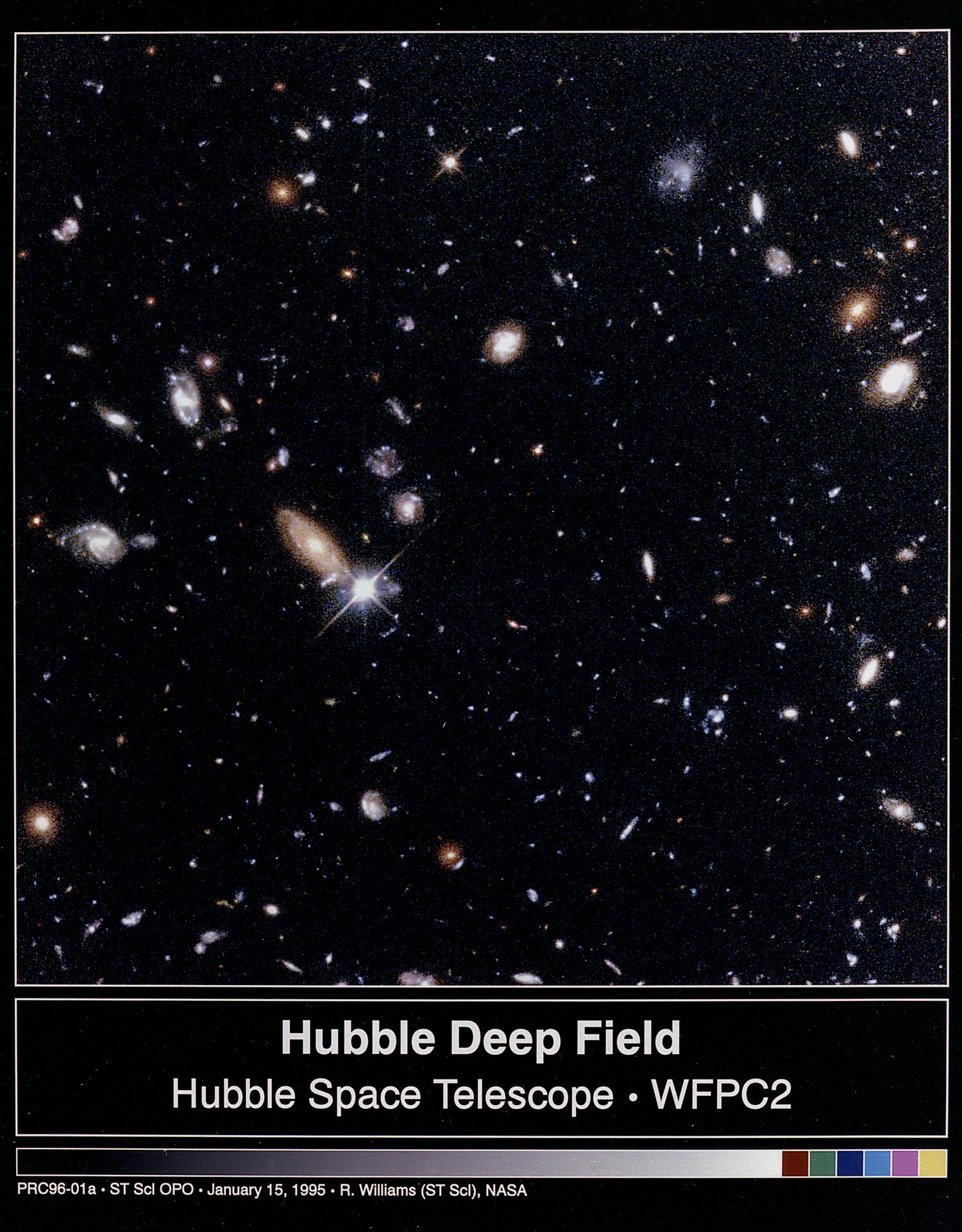
Mystic Mountain
The Hubble Space Telescope captured the chaotic activity atop a three-light-year-tall pillar of gas and dust that is being eaten away by the brilliant light from nearby bright stars in a tempestuous stellar nursery called the Carina Nebula.
Nestled inside this dense mountain are fledgling stars. Long streamers of gas can be seen shooting in opposite directions off the pedestal at the top of the image. (Credit: NASA, ESA, and the Hubble Heritage Team [STScI/AURA])
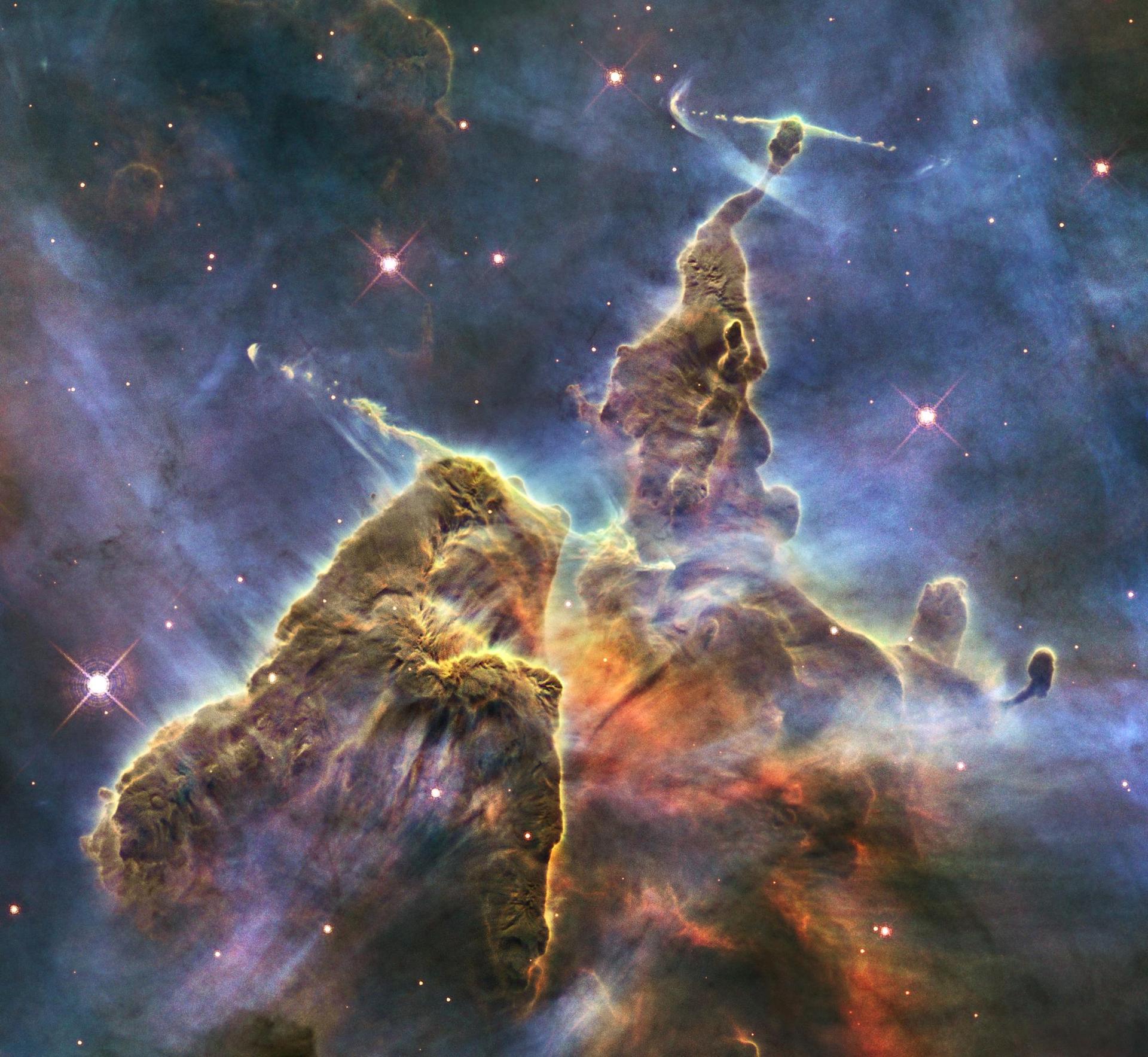
The Pillars of Creation
NASA’s Hubble Space Telescope revisited the famous Pillars of Creation, revealing a sharper and wider view of the structures in this visible-light image. Astronomers combined several Hubble exposures to assemble the wider view. The towering pillars are about 5 light-years tall. The dark, finger-like feature at bottom right may be a smaller version of the giant pillars. The new image was taken with Hubble’s versatile and sharp-eyed Wide Field Camera 3.
The pillars are bathed in the blistering ultraviolet light from a grouping of young, massive stars located off the top of the image. Streamers of gas can be seen bleeding off the pillars as the intense radiation heats and evaporates it into space. Denser regions of the pillars are shadowing material beneath them from the powerful radiation. Stars are being born deep inside the pillars, which are made of cold hydrogen gas laced with dust. The pillars are part of a small region of the Eagle Nebula, a vast star-forming region 6,500 light-years from Earth. The colors in the image highlight emission from several chemical elements. Oxygen emission is blue, sulfur is orange, and hydrogen and nitrogen are green. (Credit: NASA, ESA, and the Hubble Heritage Team [STScI/AURA])

The Antennae Galaxies
The Hubble Space Telescope snapped an incredible view of the Antennae Galaxies.
These galaxies — also known as NGC 4038 and NGC 4039 — are locked in a deadly embrace. Once normal, sedate spiral galaxies like the Milky Way, the pair has spent the past few hundred million years sparring with one another. This clash is so violent that stars have been ripped from their host galaxies to form a streaming arc between the two. In wide-field images of the pair the reason for their name becomes clear — far-flung stars and streamers of gas stretch out into space, creating long tidal tails reminiscent of antennae. (Credit: NASA, ESA, and the Hubble Heritage Team [STScI/AURA]-ESA/Hubble Collaboration)
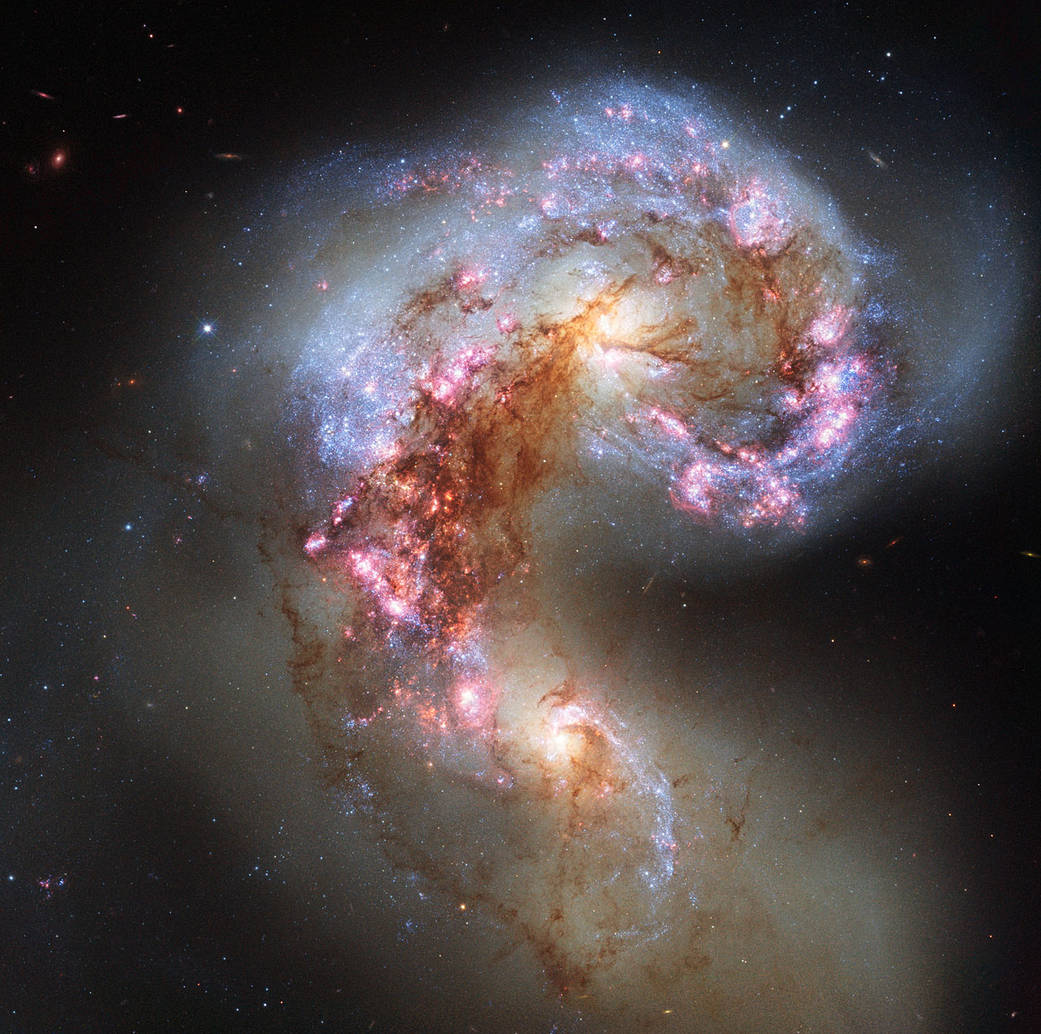
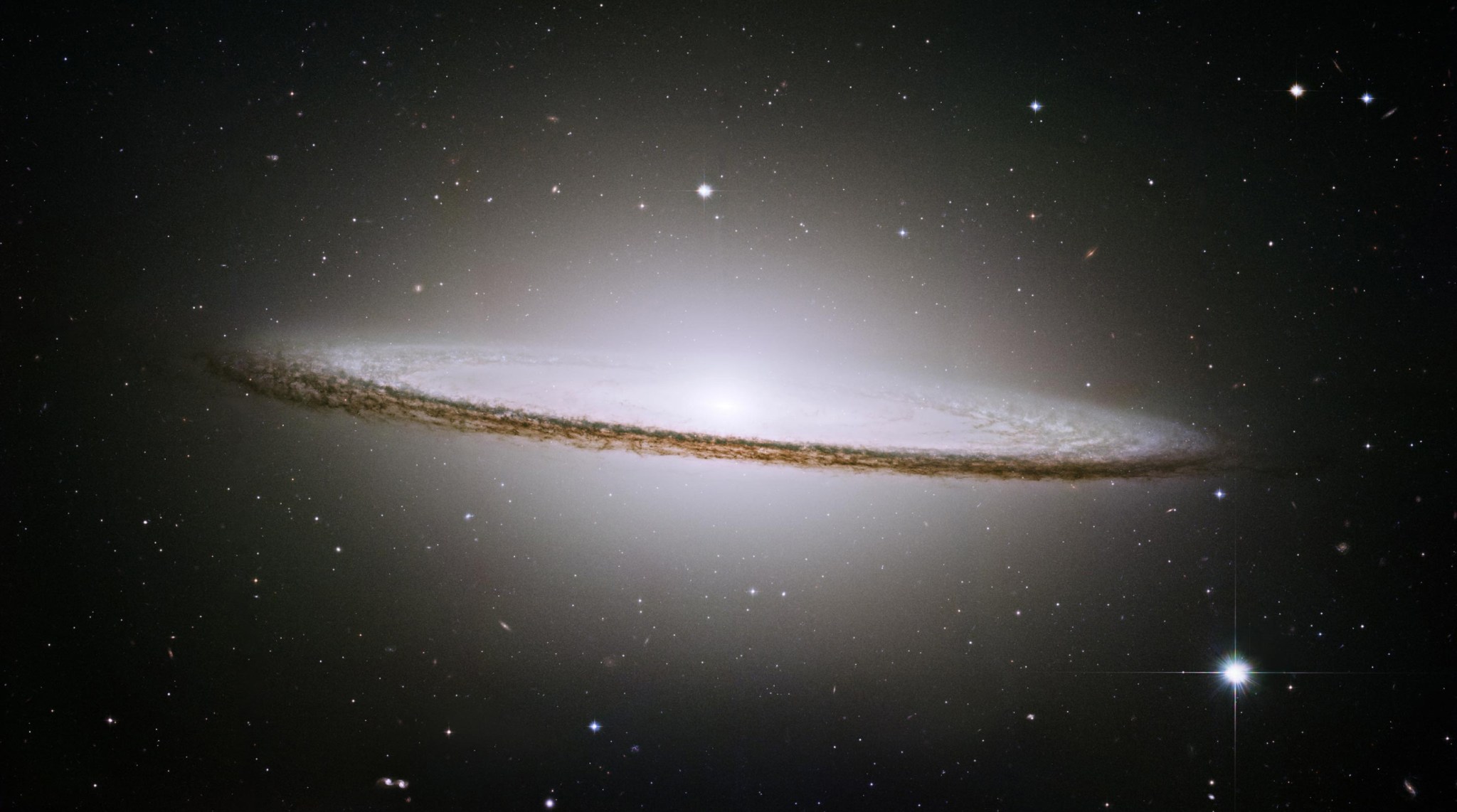
Future of Hubble
The Hubble Space Telescope has revolutionized our understanding of the universe. To date, approximately 1.7 million observations have been taken. Still, Hubble has only viewed one tenth of one percent of the sky! With redundancy in its systems and workarounds in place to handle future failures, Hubble will continue exploring the other 99.9% of sky into the 2030s.
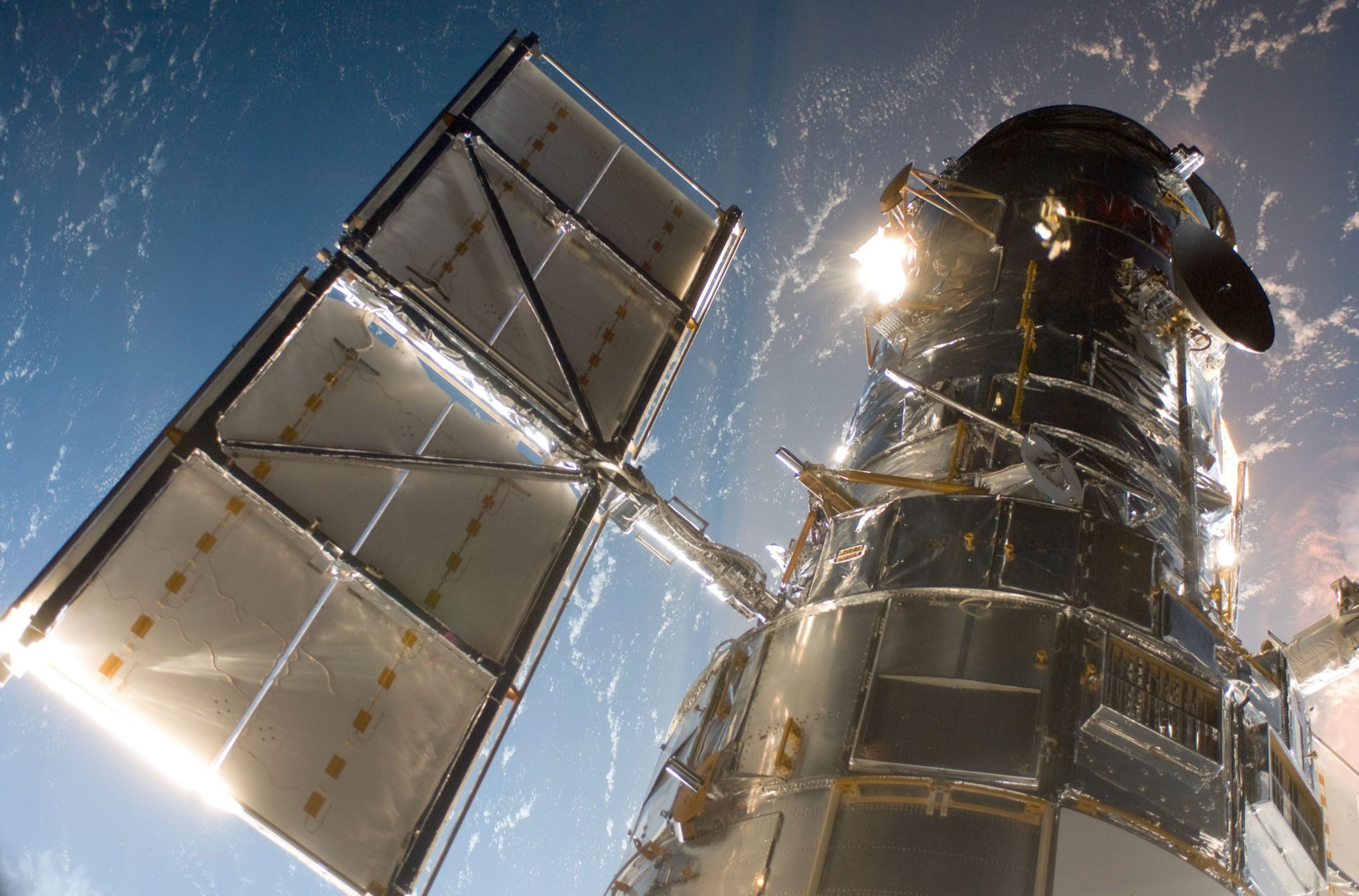
More Hubble Historic image galleries
Hubble's 35th Anniversary
Celebrate Hubble’s milestone anniversary with breathtaking new images, videos, educational materials, interactive web apps, and more.
Join the Celebration about Hubble's 35th Anniversary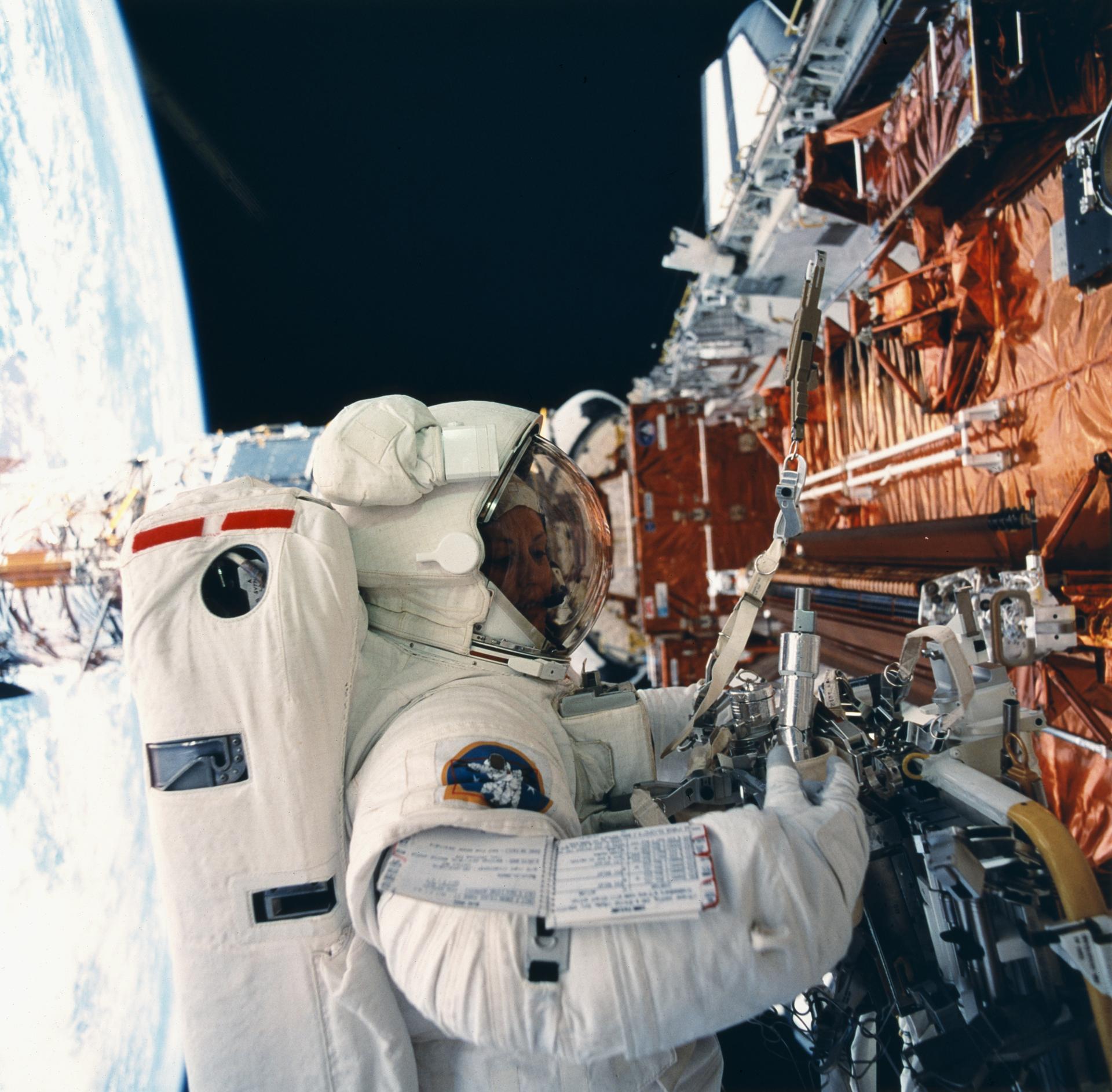
Not Yet Imagined
Not Yet Imagined: A Study of Hubble Space Telescope Operations documents the history of the Hubble Space Telescope from its launch through its first 30 years of operation in space. Written by historian Christopher Gainor, this richly illustrated book focuses on the interactions among the general public, astronomers, engineers, government officials, and members of Congress through this 30-year period.
Read the e-Book


